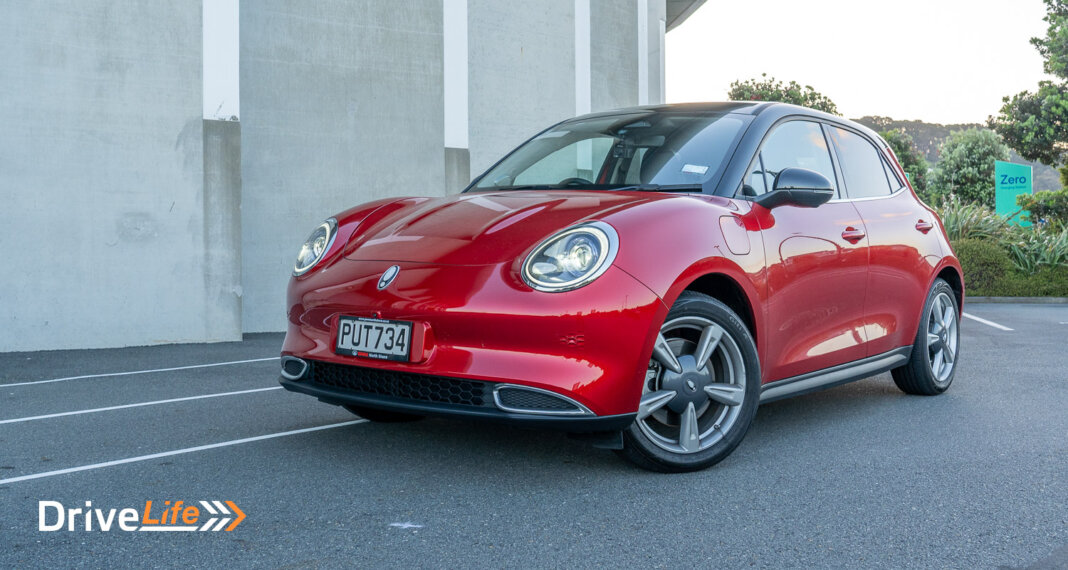The GWM Ora is popping up on our roads, as buyers flock to the car – currently New Zealand’s cheapest new EV. Being quite distinctive in design sure helps it stand out.
But are those buying decisions based on price, or the car’s abilities? No doubt some buyers are only looking for the cheapest new EV they can buy, but some will be more cautious. With other players in the market like the MG4 and BYD Dolphin, being the cheapest will help – but not if the car gets a reputation for being built to a price.
Trying to ignore my feelings that Kia should have built this car (the Kia Ora?), I spent a week and 750km behind the wheel to see if the GWM Ora is “cheap” and good.
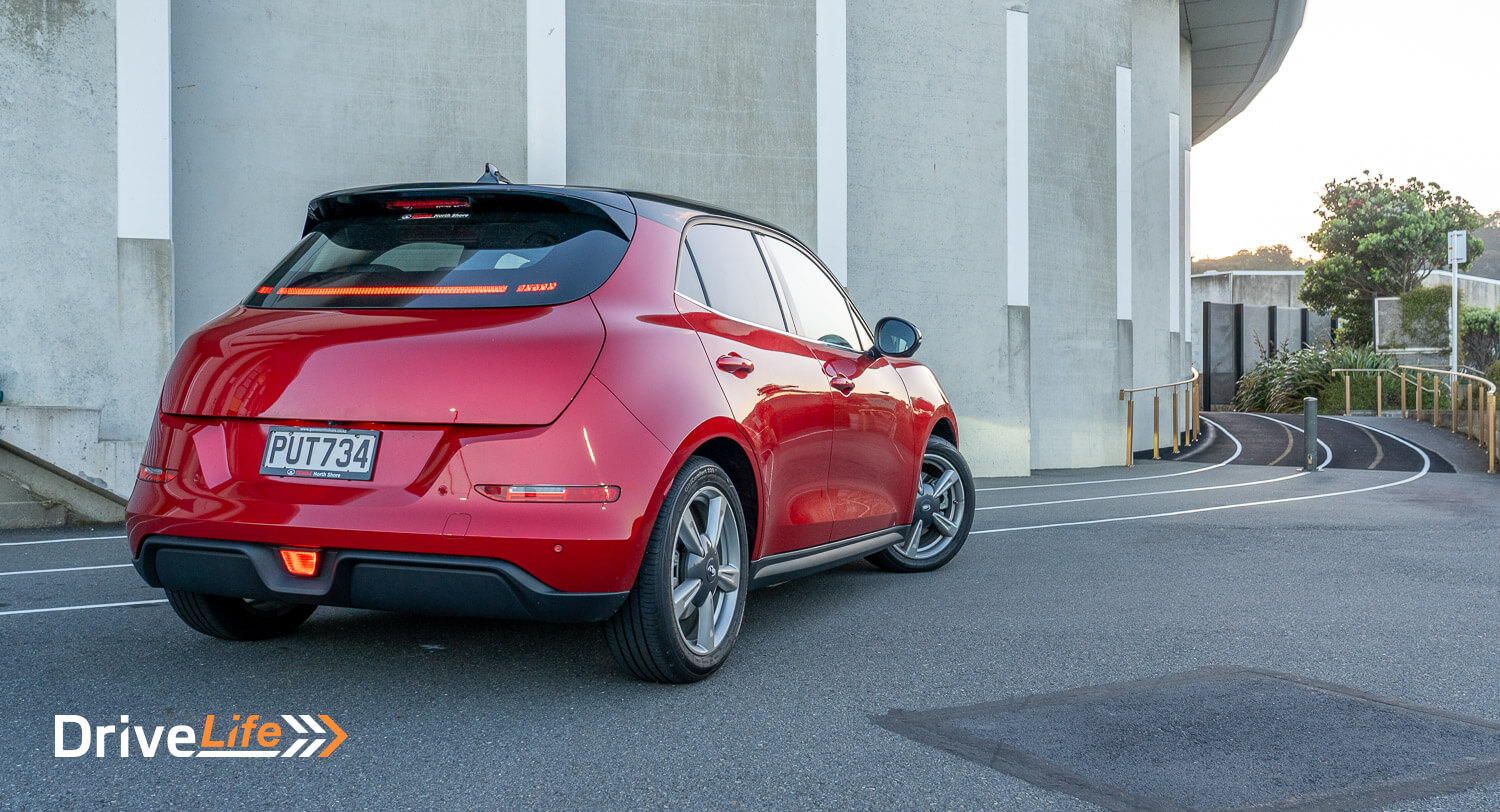
What We Like and Dislike About The 2023 GWM Ora Standard Range
| What we like | What we don’t like |
| Price Equipment levels Design Rear legroom Nippy performance Feeling of space inside Build quality Visibility in general Infotainment speed | Real-world range Design not for everyone Boot space and load height No rear wiper Annoying indicators Haptic steering wheel controls Lane Keep Assist A few glitches during our test |
What’s In The 2023 GWM Ora Range?
There are four models of Ora available in New Zealand:
- Standard Range (tested) – $42,990
- Extended Range – $47,990
- Ultra – $55,990
- GT – $58,990
The Standard Range model has a 48kWh battery pack, suggesting a range of up to 310km. The base model is fitted with a lithium-ion battery pack, while the other model Oras have a ternary lithium battery pack. You can read about the differences between the two battery types here, but essentially there are two main differences; Ternary lithium batteries aren’t as affected by very cold weather compared to lithium-ion (so perhaps not as much of an issue in New Zealand), and the cycle life of lithium-ion batteries is better than ternary lithium.
The Extended Range has a 63kWh battery pack for up to 420km range but has no other additional features over the Standard Range. The Ultra has additional features, but the battery pack and range are the same as the Extended Range model. The GT is actually slightly slower than the other models and has a range of up to 400km, but has additional features over the Ultra, which we’ll list below.
All modes have a 126kW electric motor that manages 250Nm of torque. The Standard Range, Extended Range and Ultra will accelerate to 100km/h in 8.4 seconds, while the GT takes 8.5 seconds. All models will max out at 80kW charge rate, so if you plug into (for example) a 300kW hypercharger, you are only going to get 80kW going into your battery pack.
All Oras are front-wheel drive.
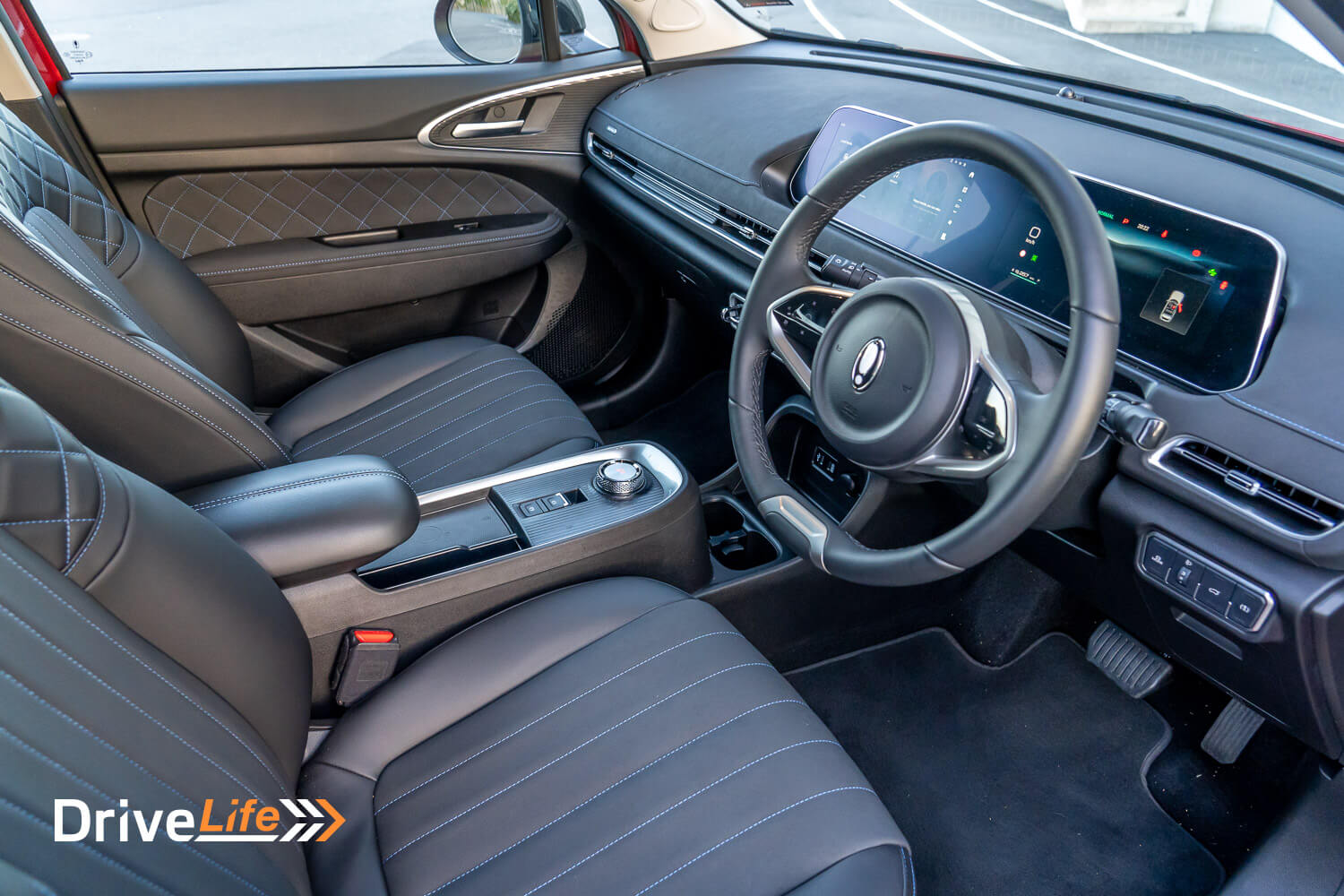
2023 GWM Ora Standard Equipment Highlights
Standard Range and Extended Range:
- One-pedal mode
- Tilt/telescope steering wheel
- Microfibre faux leather steering wheel
- Qi Wireless phone charging
- 6-way electric driver’s seat
- 4-way electric passenger’s seat
- Apple CarPlay
- 10.25” Full-Colour Touch Screen Infotainment System
- Keyless entry system
- IACC (Intelligent Adaptive Cruise Control)
- Rear privacy glass
- Power folding and heated door mirrors
Safety features:
- SCM (Secondary Collision Mitigation)
- RMI (Roll Movement Intervention)
- HHC (Hill-Start Assist Control)
- TPMS (Tyre Pressure Management System)
- Rear Parking Sensors
- Front Parking Sensors
- 360 Degree Monitoring System
- Auto Parking Assist
- ACC (Adaptive Cruise Control) with Stop and Go
- IACC (Intelligent Adaptive Cruise Control)
- Intelligent Cornering Control
- Intelligent Dodge
- ELK (Emergency Lane Keep)
- RCTA (Rear Crossing Traffic Alert)
- FCTA (Front Crossing Traffic Alert+braking)
- FCW (Forward Collision Warning)
- LDW (Lane Departure Warning)
- LKA (Lane Keeping Assist)
- LCK (Lane Centre Keeping)
- AEB (Automatic Emergency Braking) Pedestrian, Cyclist & Crossing
- TSR (Traffic Sign Recognition)
- Lane Change Assist
- RCW (Rear Collision Warning)
- TJA (Traffic Jam Assist)
- Driver Drowsiness Detection (Camera Based)
- ISOFIX
Lighting:
- LED Headlights
- Auto Headlights
- Follow Me Home Function
- High-Beam Assist
- Rear Fog Lights
- DRL (Daytime Running Lights)
- Welcome Lighting Effect
The Ultra model adds:
- Massaging Front Seat with Heating and Ventilation
- Electric tailgate-handsfree
- Panoramic sunroof
- Heated Steering Wheel
- 6-way Electric Driver Seat with memory
- Massaging Front Seat with Heating and Ventilation
- Auto-folding Door Mirrors
- Auto Parking Assist
The GT model adds:
- GT Bumpers and Grille
- Red Callipers
- Front Crossing Traffic Alert and Braking
- Launch control
2023 GWM Ora – Colour Range
The Standard Range, Extended Range and Ultra models are available in:
- Hamilton White
- Sun Back
- Glacier Blue
- Sun Back with a white roof
- Aurora Green with a black roof
- Hamilton White with a black roof
- Mars Red with a black roof
Models with a different coloured roof cost an extra $500.
The GT model is available in:
- Chalk Grey with a black interior with red stitching and accents
- Sun Black with a black interior with red stitching and accents
- Mars Red with a black interior with red stitching and accents
- Hamilton White with a black interior with red stitching and accents
- Glacier Blue with a black interior with red stitching and accents
With the two-tone paint, the as-tested price of our review car was $43,495.
For a full list of specs and options available for the GWM Ora Standard Range head on over to GWM New Zealand’s website.
How Does The 2023 GWM Ora Standard Range Compare To Its Competition?
It’s a claim often made – GWM Ora is the cheapest new EV you can buy in New Zealand.
| Make/ Model | Battery Capacity kW-hr | Power/ Torque kW/Nm | 0-100km/h seconds | Range (WLTP) | Boot Space, litres | Price (excl CCP) |
| Nissan Leaf e+ 59kWh | 59 | 160/340 | 6.9 | 385 | 405 | $58,990 |
| Peugeot e-208 | 50 | 100/260 | 8.3 | 382 | 311 | $56,990 |
| Opel Corsa-e | 50 | 100/260 | 8.1 | 435 | 309 | $49,990 |
| BYD Dolphin Standard | 44.9 | 70/150 | 12.3 | 412 | 345 | $49,990 |
| MG4 Excite 51 | 51 | 125/250 | 7.7 | 350 | 363 | $46,990 |
| GWM Ora Standard Range | 48 | 126/250 | 8.4 | 310 | 228 | $42,990 |
Please note DriveLife does its best to ensure the information below is correct at the time of publication, however, prices and models can change over time. Please bear that in mind when comparing models in the comparison table.
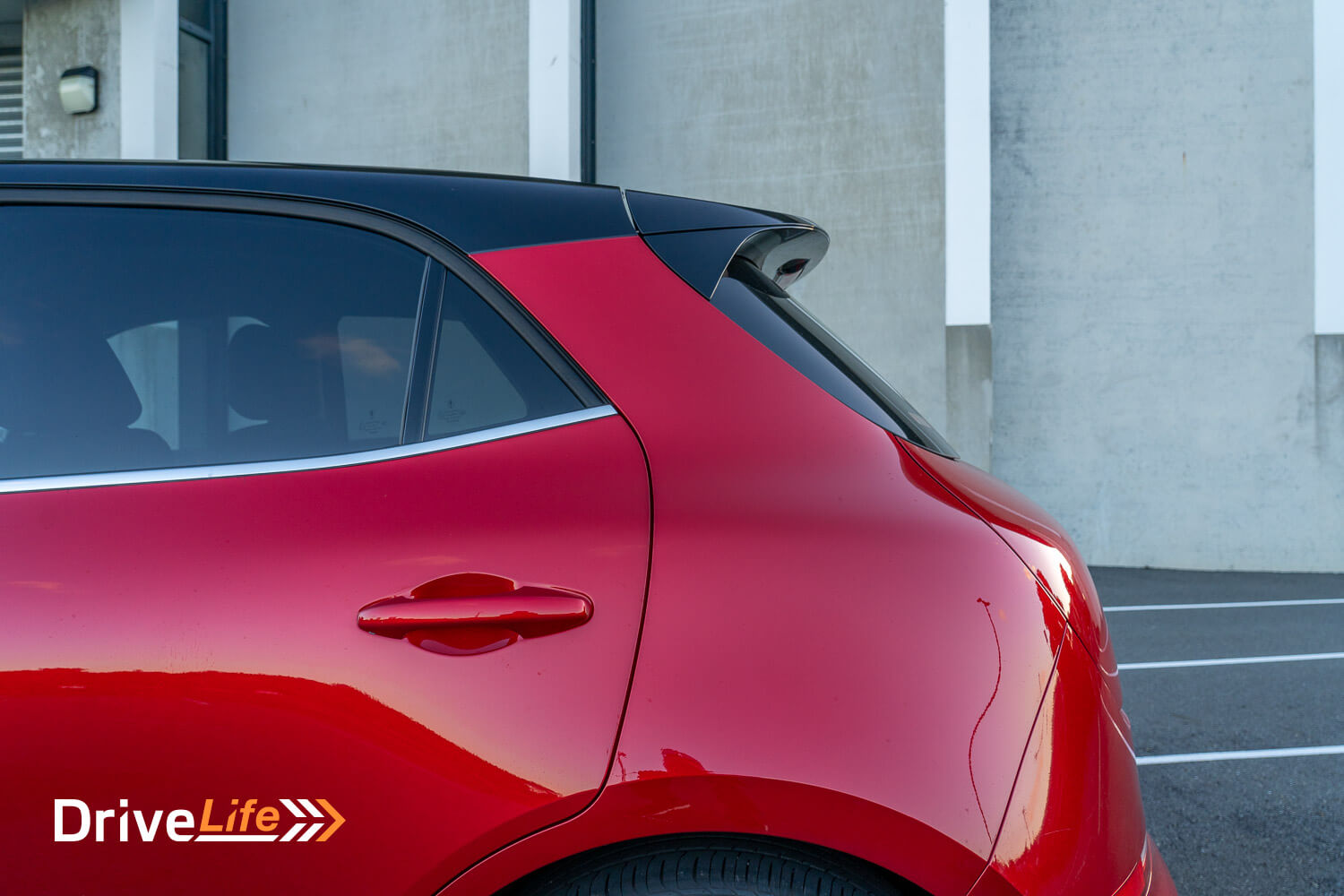
First Impressions Of The GWM Ora Standard Range
While the design of the Ora is not for everyone, my first sighting of our test car in Mars Red with a black roof was a surprise: it looked really good. The red suits this car perfectly, almost rivalling that other superb colour, Mazda’s Soul Red.
Someone told me it resembles a “clown car” and perhaps that’s what it looks like to some, but it sure does create comments and interest. Several times when parking the car, I’d walk away and see people looking at it.
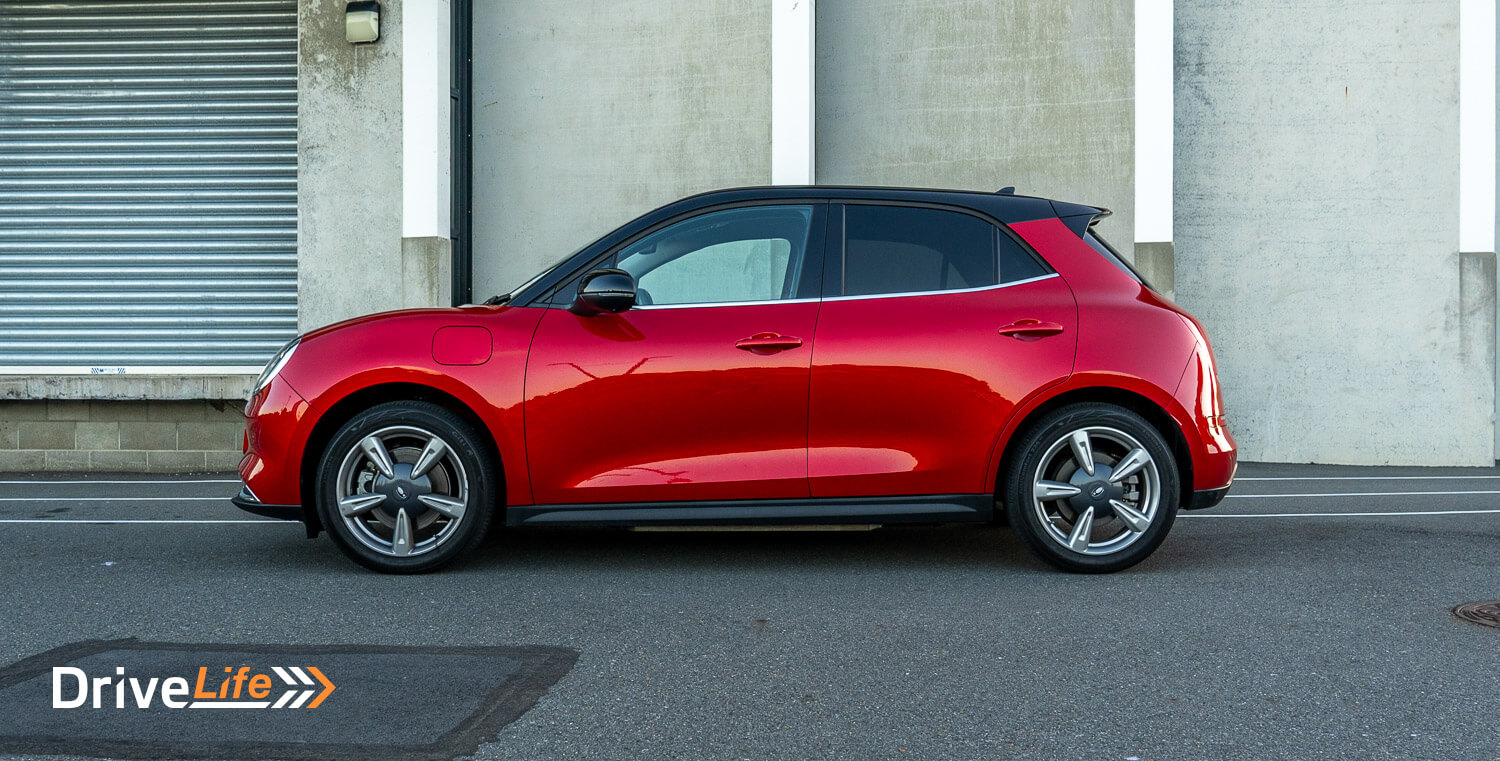
Around the back, there are no tail lights in the body panels, meaning a nice, clean rear end. This can make the car’s rear seem a bit bulbous and looks like an earlier Nissan Leaf, but I still like it. The stop lights are inside the glass of the hatchback, while the indicators are in the bumper.
The car looks big, but its actual length is around the same as a current Mazda2 at 4.2 metres (the Mazda is 4.08m), so it’s short.
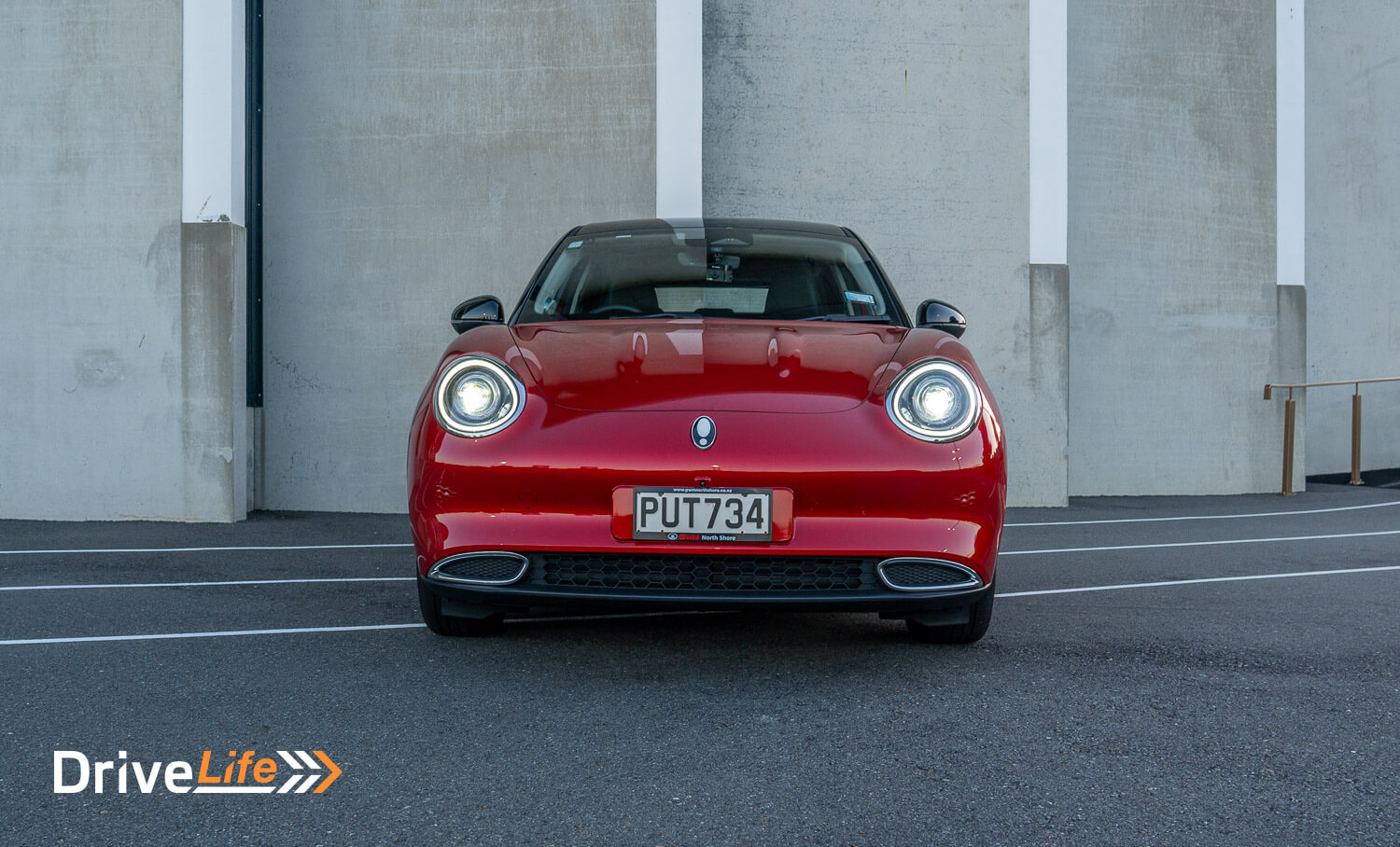
What’s The Interior Like In The 2023 GWM Ora Standard Range?
First impressions on the inside are a nice, open cabin. Some of this is down to the beige headlining and pillars, and also because of the centre console; it stops short of the dash, then falls away to the floor, where it has two cupholders and some other storage. It makes the front of the car feel much more open.
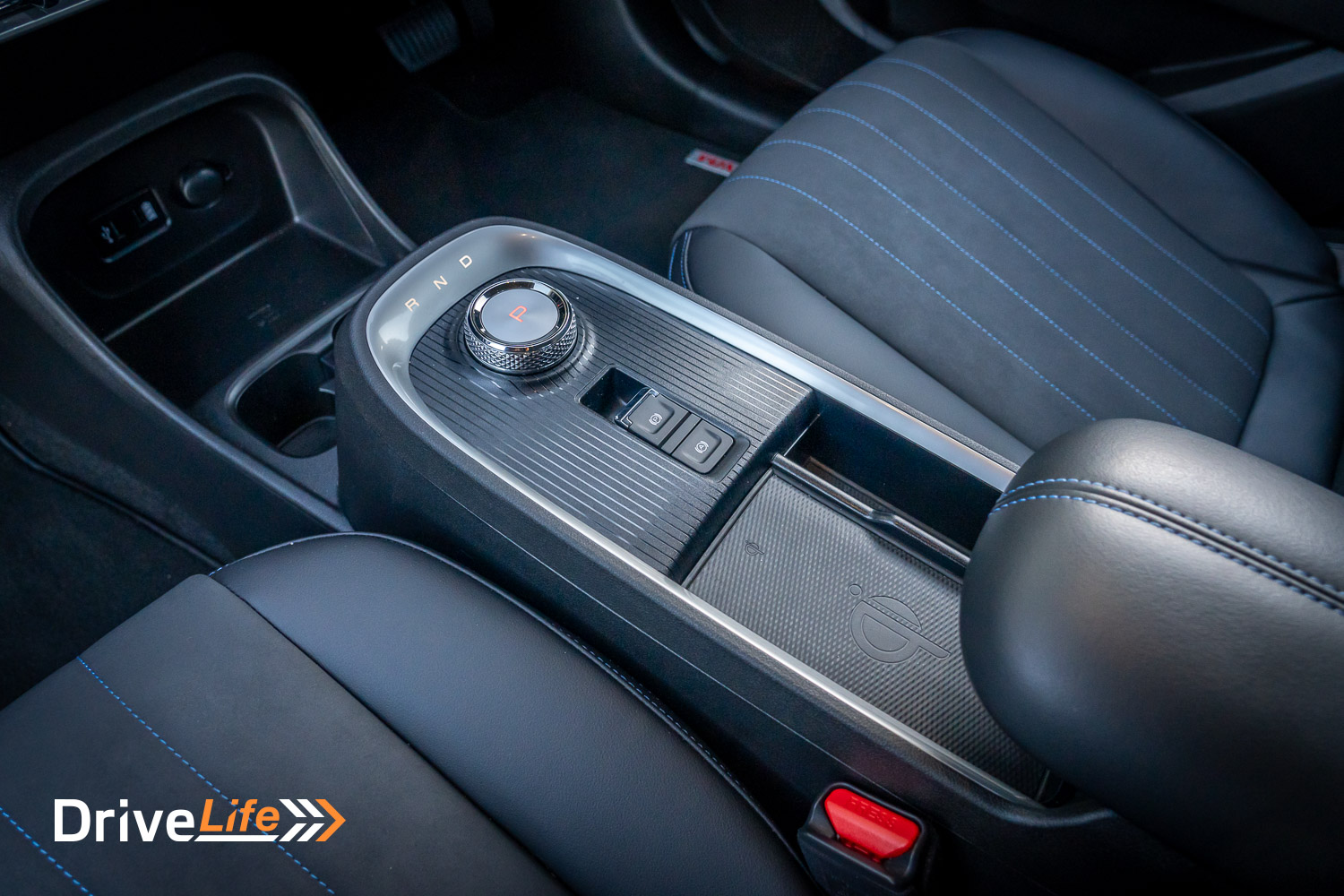
In front of the console are two USB-A ports – no idea why GWM didn’t make these USB-C, but there you go – and a 12-volt socket.
At the rear of the centre console is a deep but smaller cubby, and on top is a flat Qi wireless cellphone charger. It has a rubberised mat so there’s no danger of your phone sliding about.
The lower part of the dash holds some AC buttons looking like they’ve been lifted straight out of a MINI. Regardless, they look and feel pretty good. More on the AC in the Ora later in this review.
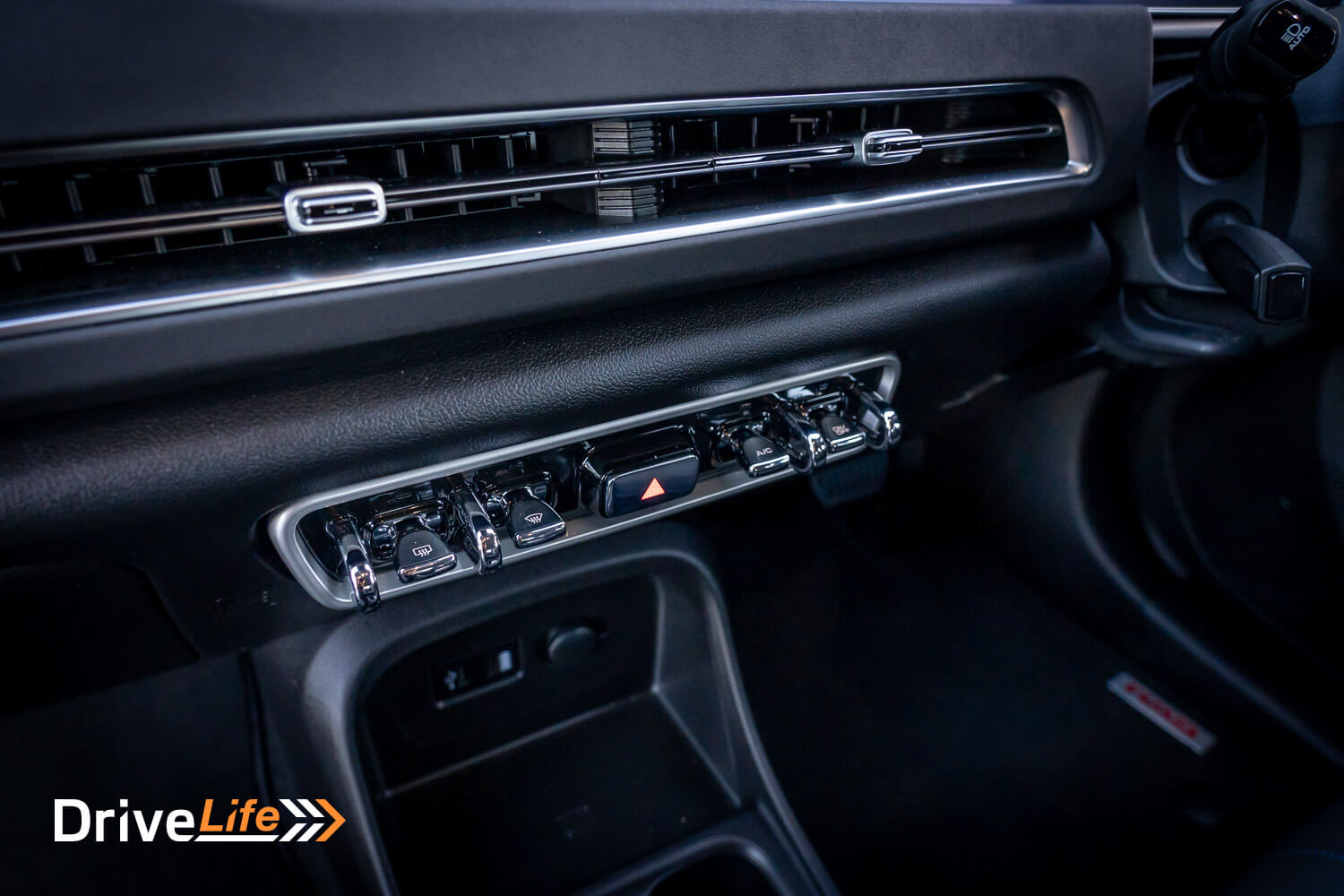
The seats in our test car were black with some nice, blue contrasting stitching on them. This blue stitching is carried over to the doors, which have a nice soft-touch panel with a cross-stitch pattern across them. It gives the whole car a more of a luxury feel, somewhat belying its more budget price (for an EV).
On the passenger’s side at the front is a medium-sized glovebox, surprising in capacity for this size of car. The top of the dash is finished in a softly padded material that makes you want to touch it, as my passengers often did.
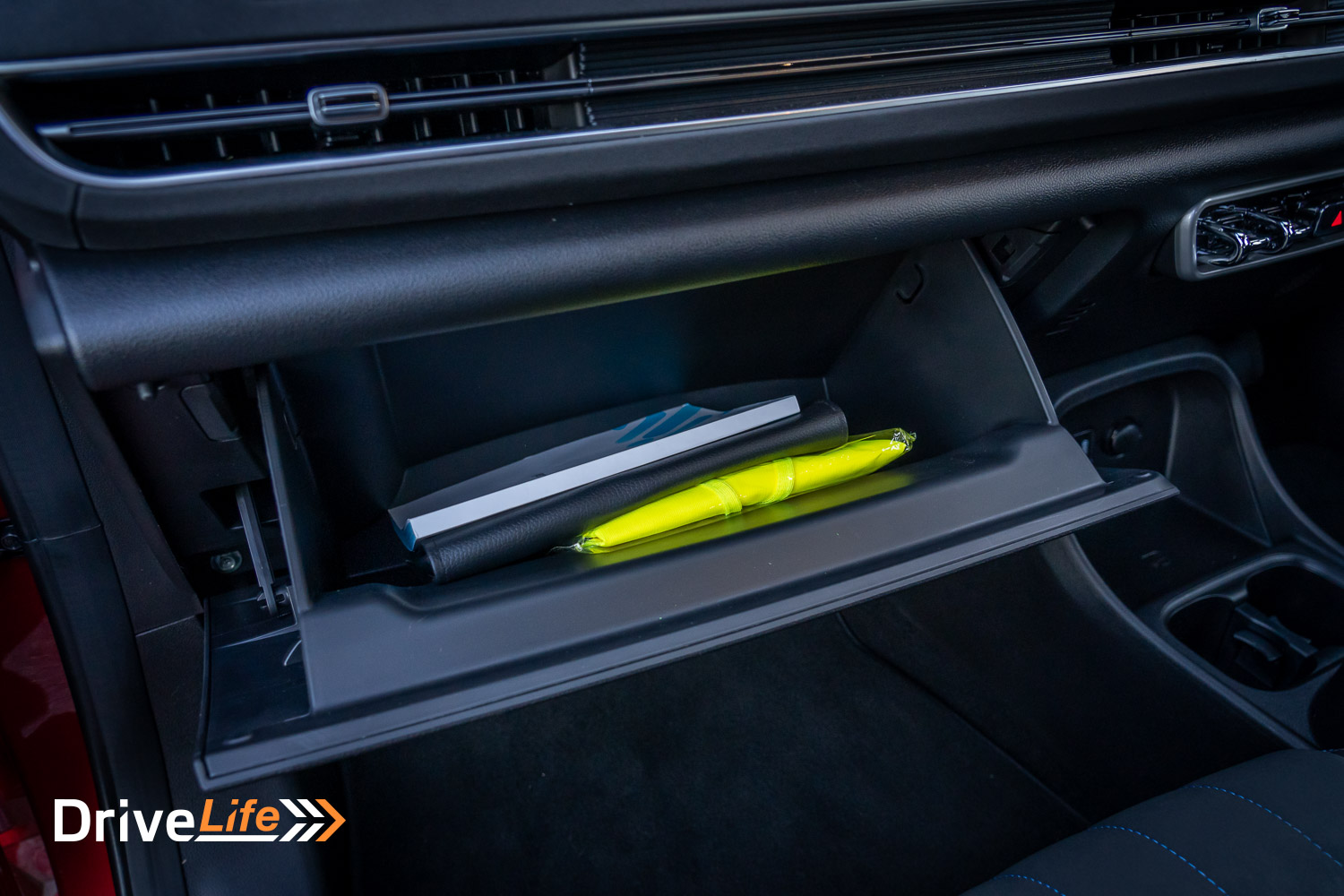
Rear seat passengers get a single USB-A socket and a decent amount of legroom. While legroom in the rear is generous, headroom isn’t, so taller passengers might have their heads hitting the roof. There’s a small hump in the middle of the rear floor, so it’s not quite flat as you might expect with an EV.
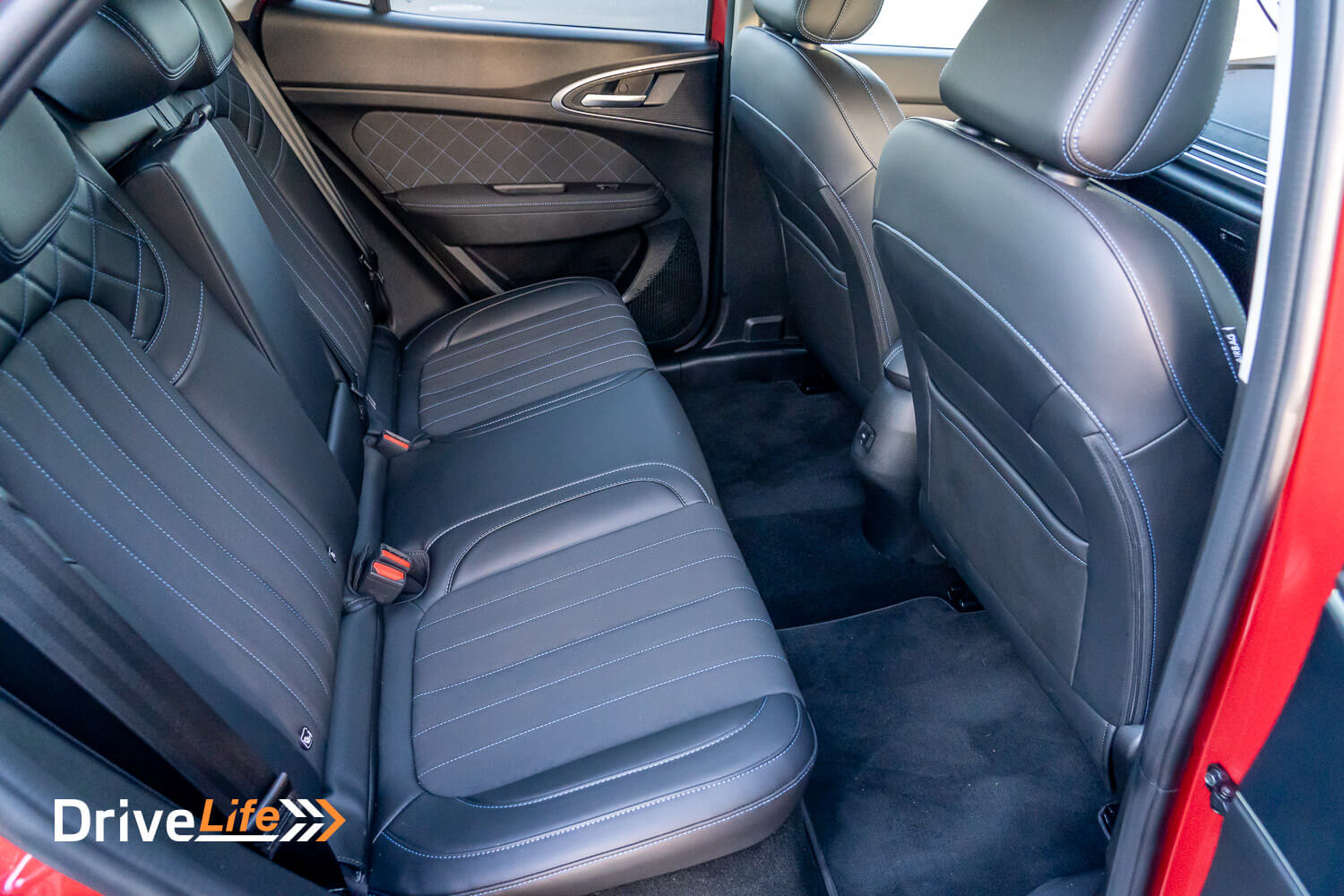
Opening the tailgate can be tricky. The button on the remote doesn’t pop the boot at all, for some reason. You can pop it with a button on the dash, or reach under the hatch lid to press a button there. The boot itself is pretty small at 228 litres. Compare this to 363 litres in the MG4 or 345 litres in the Dolphin and it shows one area where the Ora is down a little. Under the floor is a tyre pump, tyre repair kit and a safety triangle. Like its main competition and so many other new cars, there is no spare wheel.
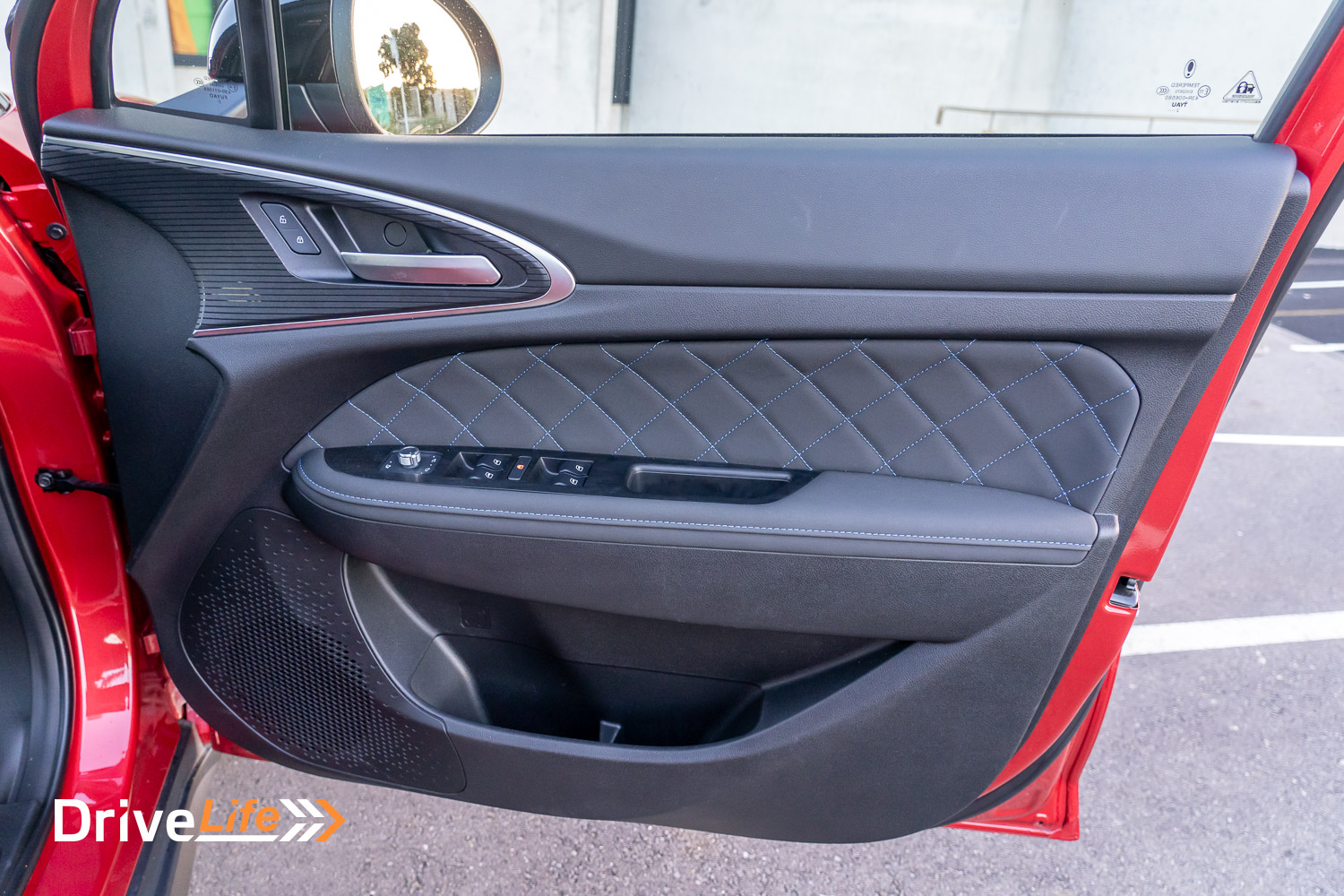
The loading height of the Ora is pretty high, again one area where its main rivals will beat it. There is no frunk on the Ora (the same as the MG4 and Dolphin), so you will not be able to store anything under the bonnet area.
Overall, inside and out build quality is very, very good. All the shut lines on the car are even and the interior seems nicely made. All panels line up inside the car, and gaps between interior panels are tight. No concerns in this area at all.

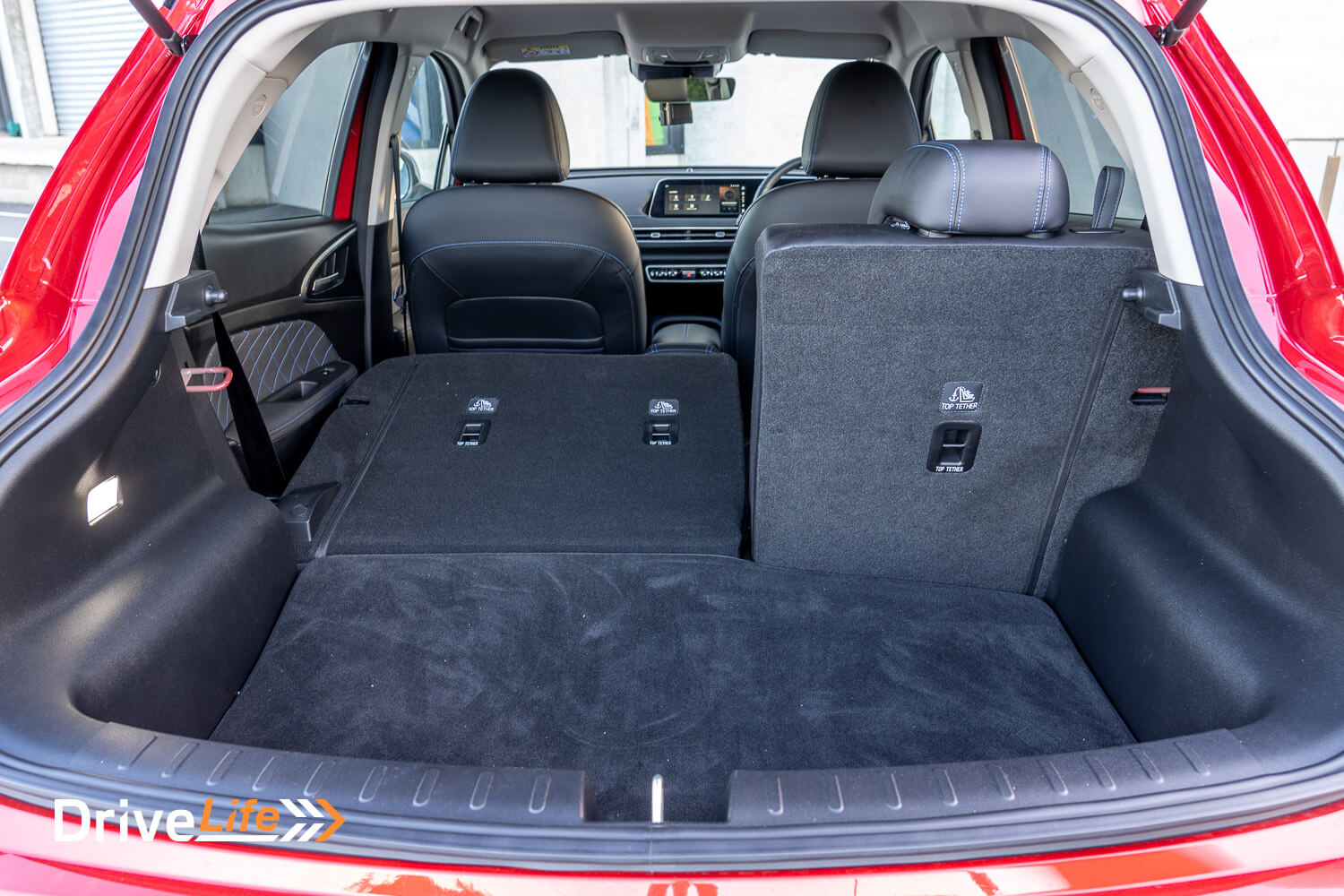
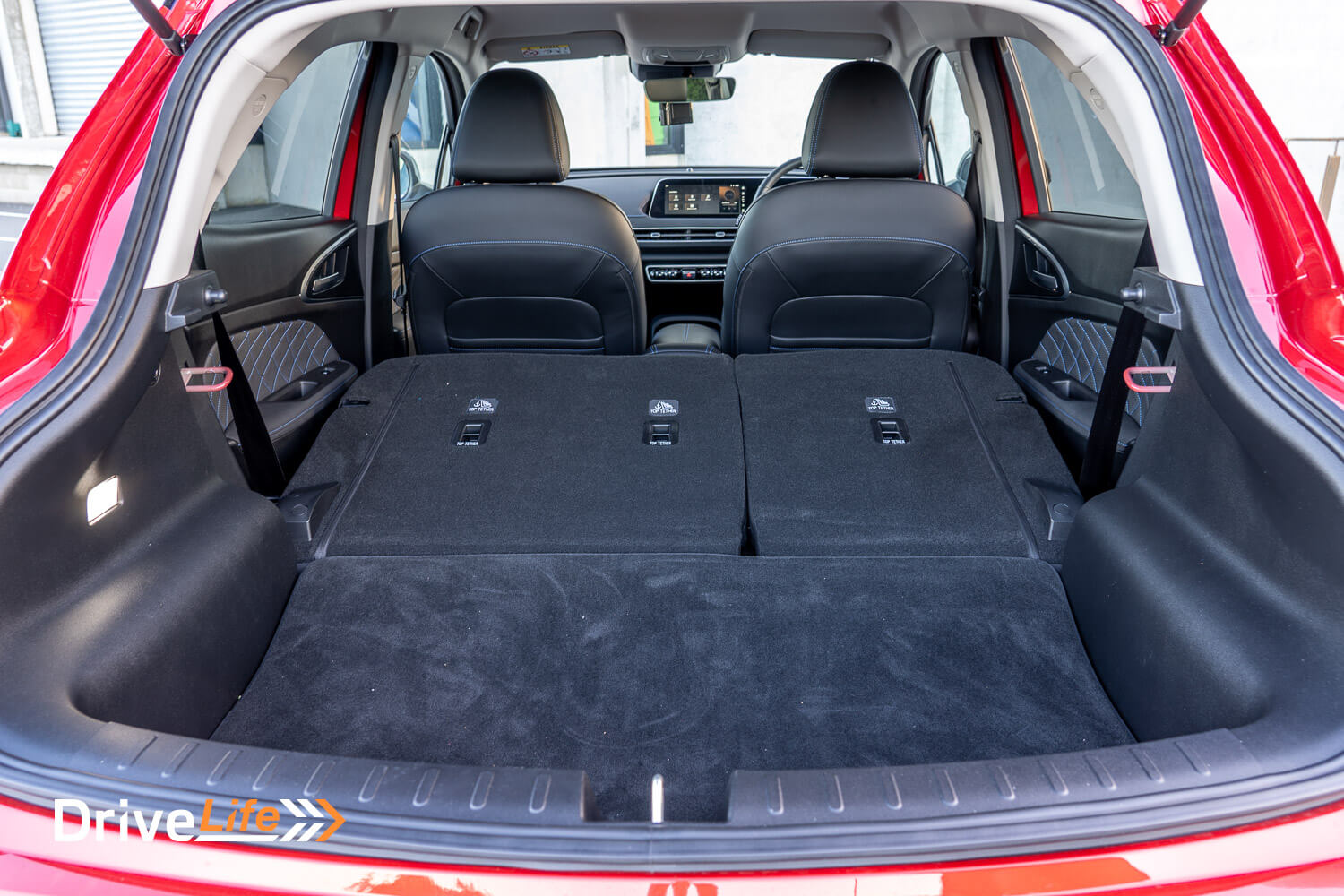
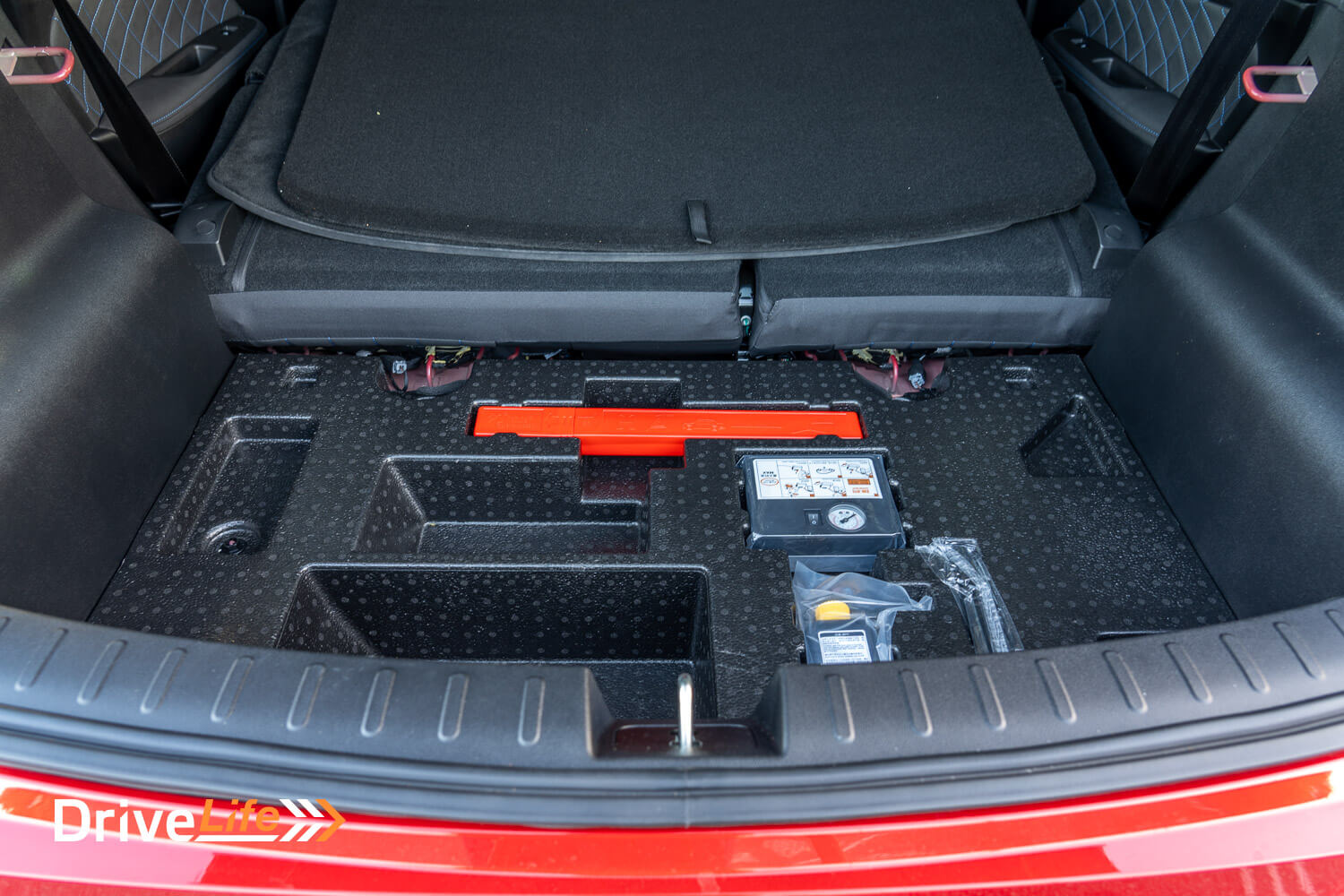
What’s The 2023 GWM Ora Standard Range Like To Drive?
It was ominous that on picking our test car up, I was shown how to disable some of the driver assistance systems. It seems that similar to the MG4 and Dolphin, these can be intrusive, and well, annoying. Our time behind the wheel will show if this is true.
To ‘start’ the Ora, you press on the brake pedal – that’s it. When you get out and lock the car, it turns off. So simple, and something Tesla has done for a long time, as does Polestar. If you plan on sitting in the car for a while and don’t want the aircon and other power-sucking things on, there’s a power button on the dash on the right-hand side of the steering wheel to kill the car’s power. It’s all very easy and simple.
My first sight before driving off is of the small thing stuck to the A-pillar; this is part of the driver monitoring system that’s designed to make sure you are keeping your eyes on the road and not on your phone. We’re seeing this on so many cars now; in fact, the last three test cars have all had this feature and it will become an ANCAP 5-Star requirement at some point. Some do this driver monitoring better than others, but I’m happy to report that the one in the Ora was not over the top, and worked quite well.
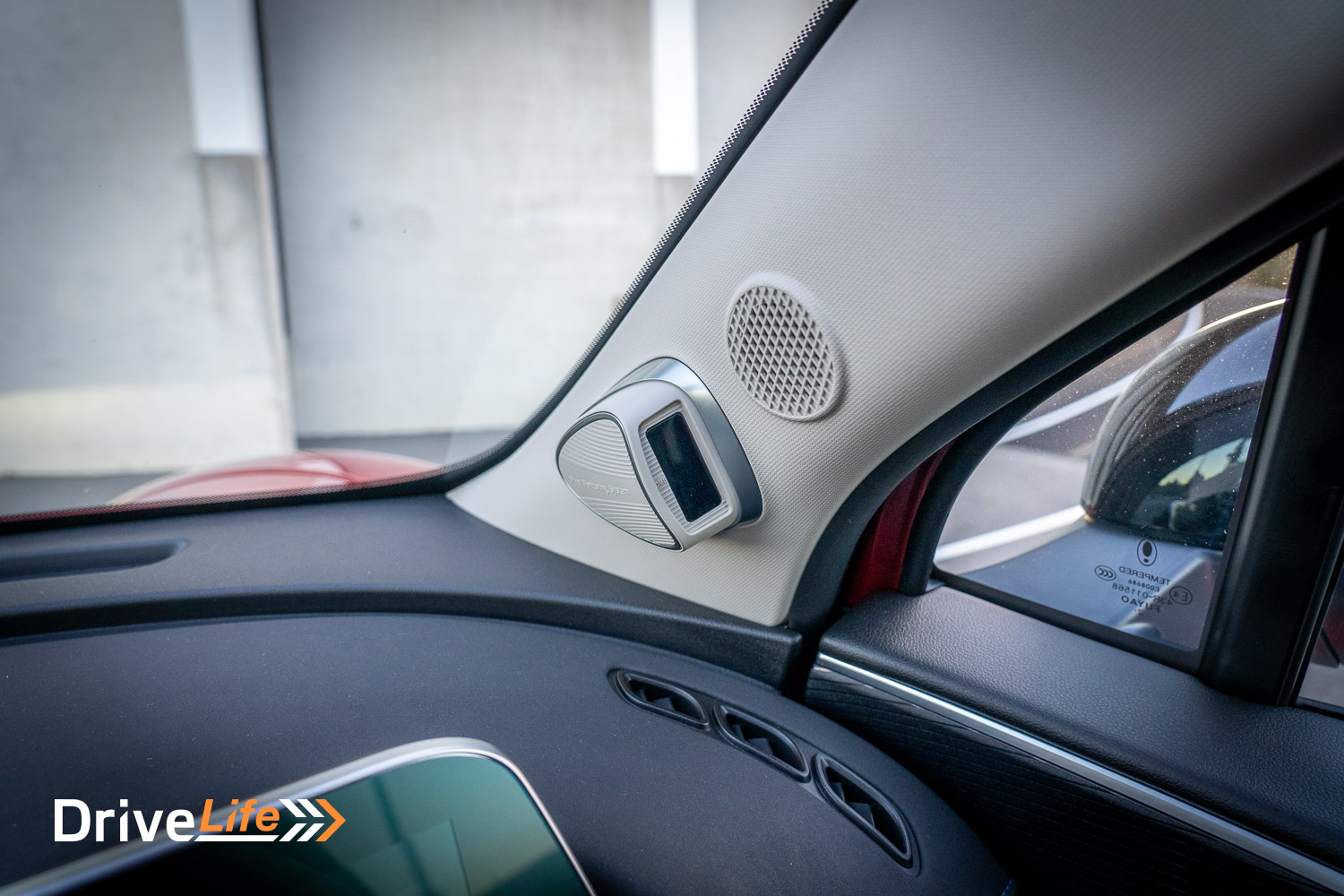
To select a gear in the Ora, there is a rotary drive selector on the console, and it’s pretty simple to use. It doesn’t have a stop, so you can spin it as much as you want one way or the other, to select your gear. Anyone can use it and pick it up very quickly.
On leaving the dealership, performance is peppy, as you’d expect with 126kW of power pulling the 1,546kg Ora along. The steering feels too light, but I managed to change it to Sport mode (in the infotainment system) and this gave it some decent weight. I left the Ora in Sport mode for the steering the entire time I had it; the other two settings, Light and Comfort, were just too lifeless for me.
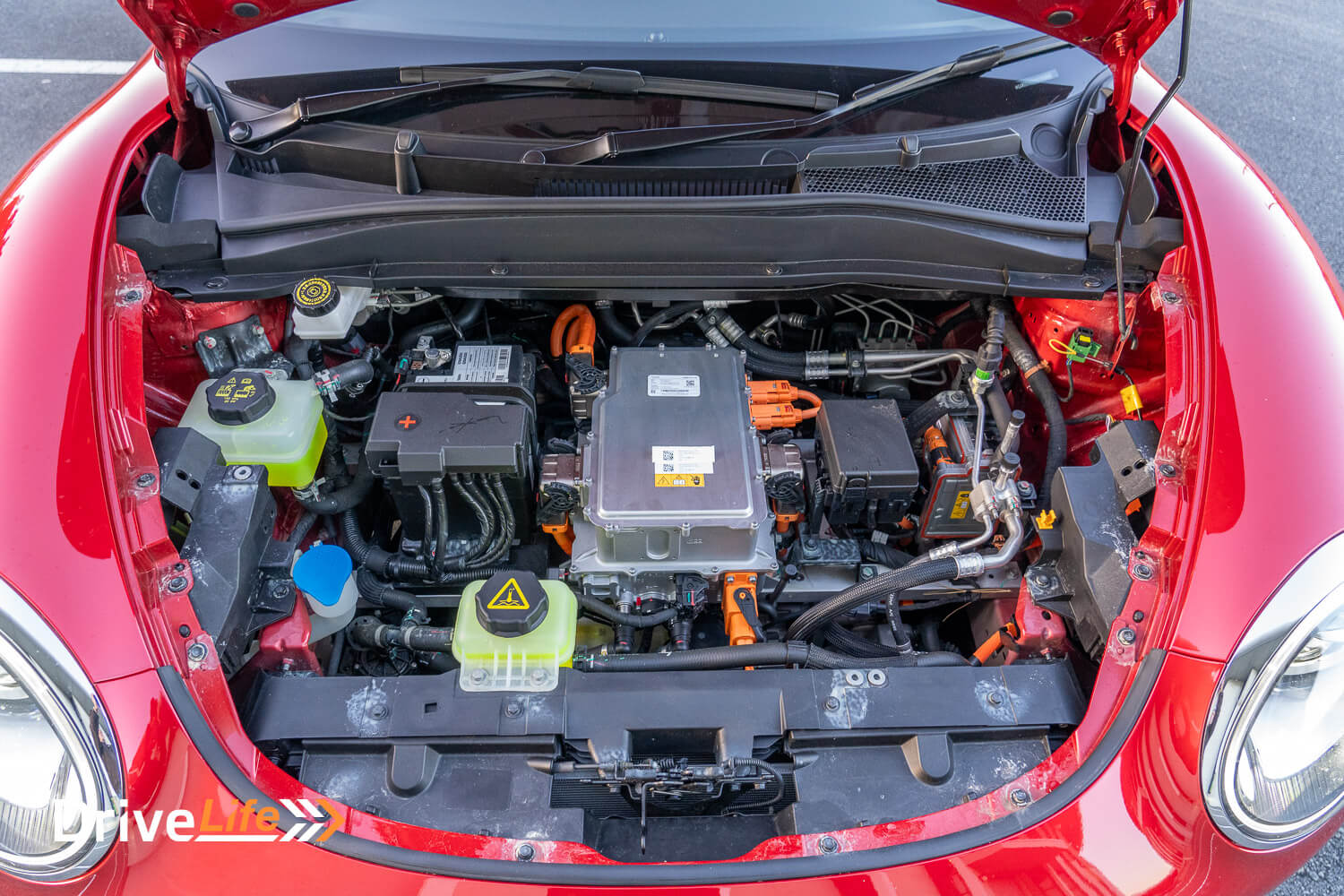
Heading on to the motorway, that performance can get you to motorway speeds very quickly, and quietly. After driving the Ora for 750km in total, in general, wind, tyre and road noise are well managed, although on coarse-chip seal the tyres can be on the noisier side.
With evening sun on the driver’s side of the car, I pulled the driver’s visor around to find it only covers half the length of the door; hopefully, the next model will come out will have a sliding sun visor to help with this. A small point, but the sun hitting the driver’s head right on the side can be wearing on a long commute.
Ride quality at most times is very good, smooth and nicely quiet suspension. It can feel a little floaty when getting to some undulations on the road, but overall the experience in the Ora is a good one.
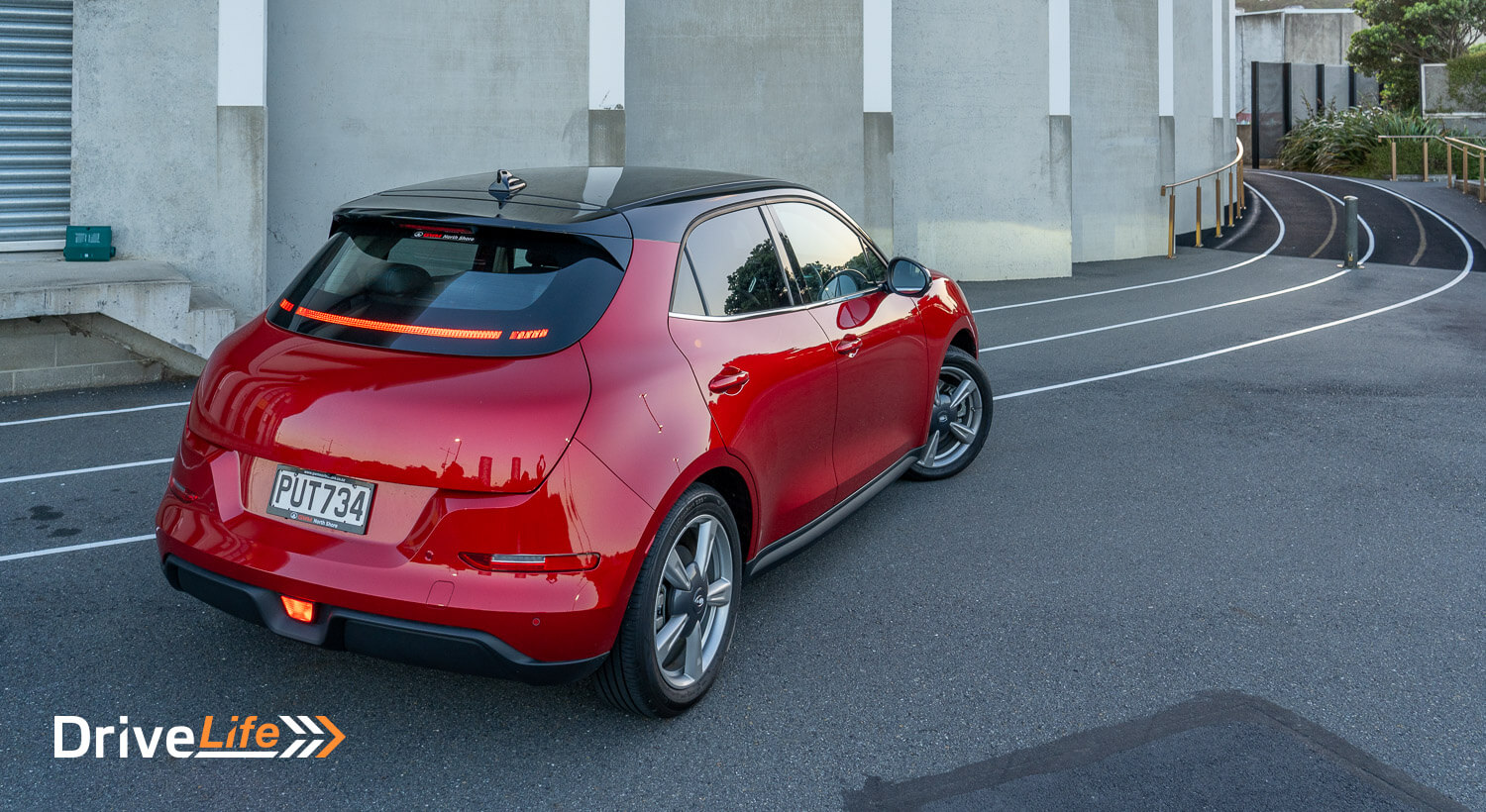
I had rain for half my time with the Ora, and that highlighted that the car has no rear window wiper, meaning a rear window full of rain tht’s hard to see through. This may not be too big an issue, as the rear headrests block most of your view out the back window anyway. Visibility in other directions is fine though, bordering on very good, and even this base model we are testing has blind spot monitoring.
There were a few other niggly things I discovered after 700km of driving the Ora. The car has those annoying indicators where you try and turn them off and end up flicking the other indicator on, then back again, and back again. Please GWM, just give us normal indicators.
The cruise control stalk is hidden behind the left steering wheel spoke, but you soon get used to how it works. One pull of the stalk will turn on adaptive cruise, and two pulls will turn on Smart Cruise, which enables steering assist. Weirdly though, even in normal adaptive cruise control, the steering assist worked.
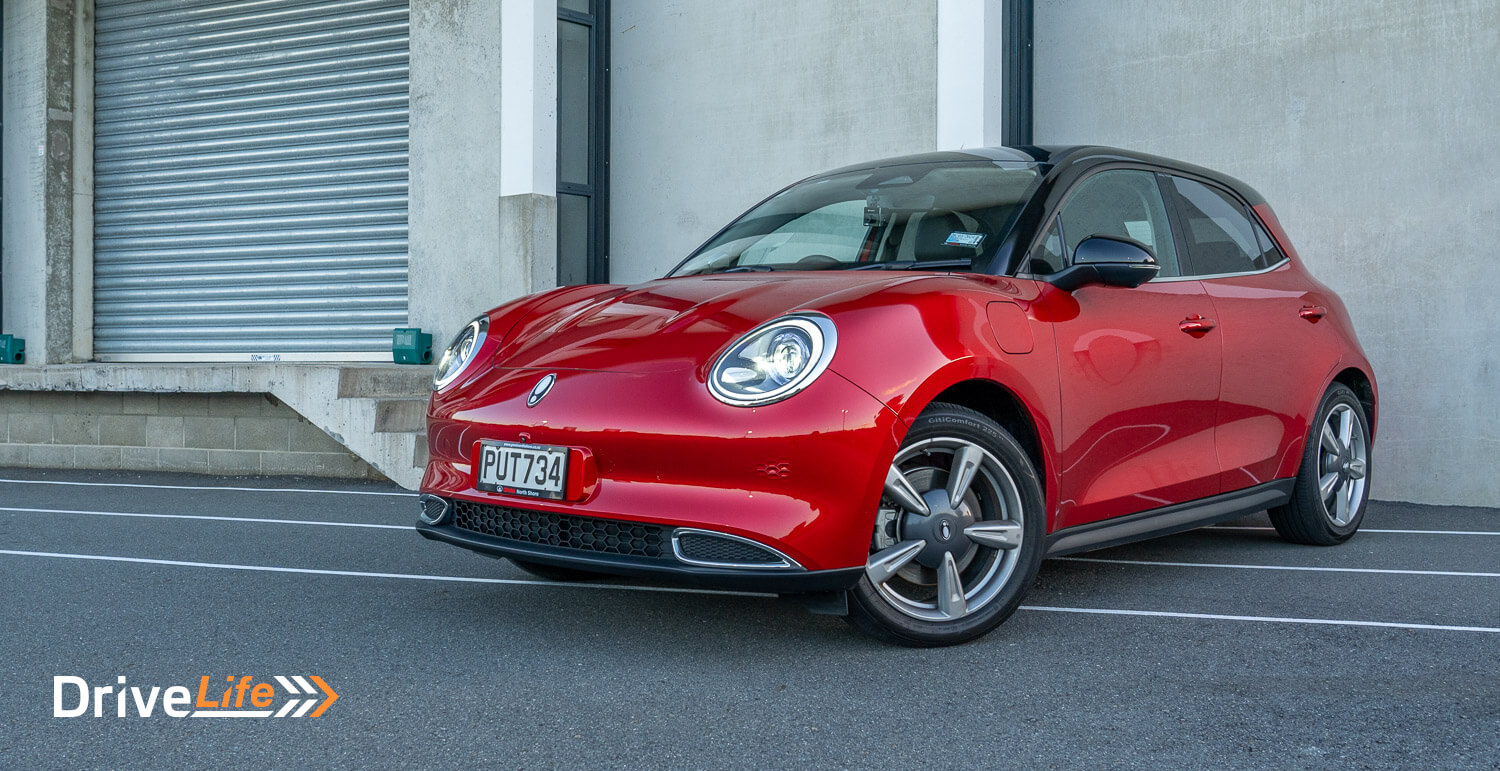
The Ora has a setting (that you can only access through the menus) for One Pedal driving; there’s a few things happening with One Pedal driving. First off, it’s not that strong so you will end up needing to use the brake, especially downhill. The other thing is if you enable One Pedal, turning on cruise control will disable it. And then when you turn off cruise control, One Pedal doesn’t re-enable, so you need to go back into the menus again to turn it on. This seems like a bit of a bug that I hope will be fixed with an update sometime.
So One Pedal doesn’t really do one-pedal driving. If you don’t use One Pedal, you can select Light, Medium, or Strong brake regeneration. Note you have to do this through the infotainment system; there are no brake regen paddles. If the Ora had regen paddles, it’d be so much easier to adjust this while on the move.
For some reason, GWM has decided to give the Ora haptic steering wheel controls. This means no actual buttons, and instead, you need to feel what you are doing the best you can or look down at the buttons. It works better than other haptic systems like on a Mercedes-Benz but still not ideal. The other issue I found was when I turned on my headlights manually. I always drive with my headlights on at all times, and this turns off the illumination behind the haptic controls so they end up dark. Then it really is a touch system.
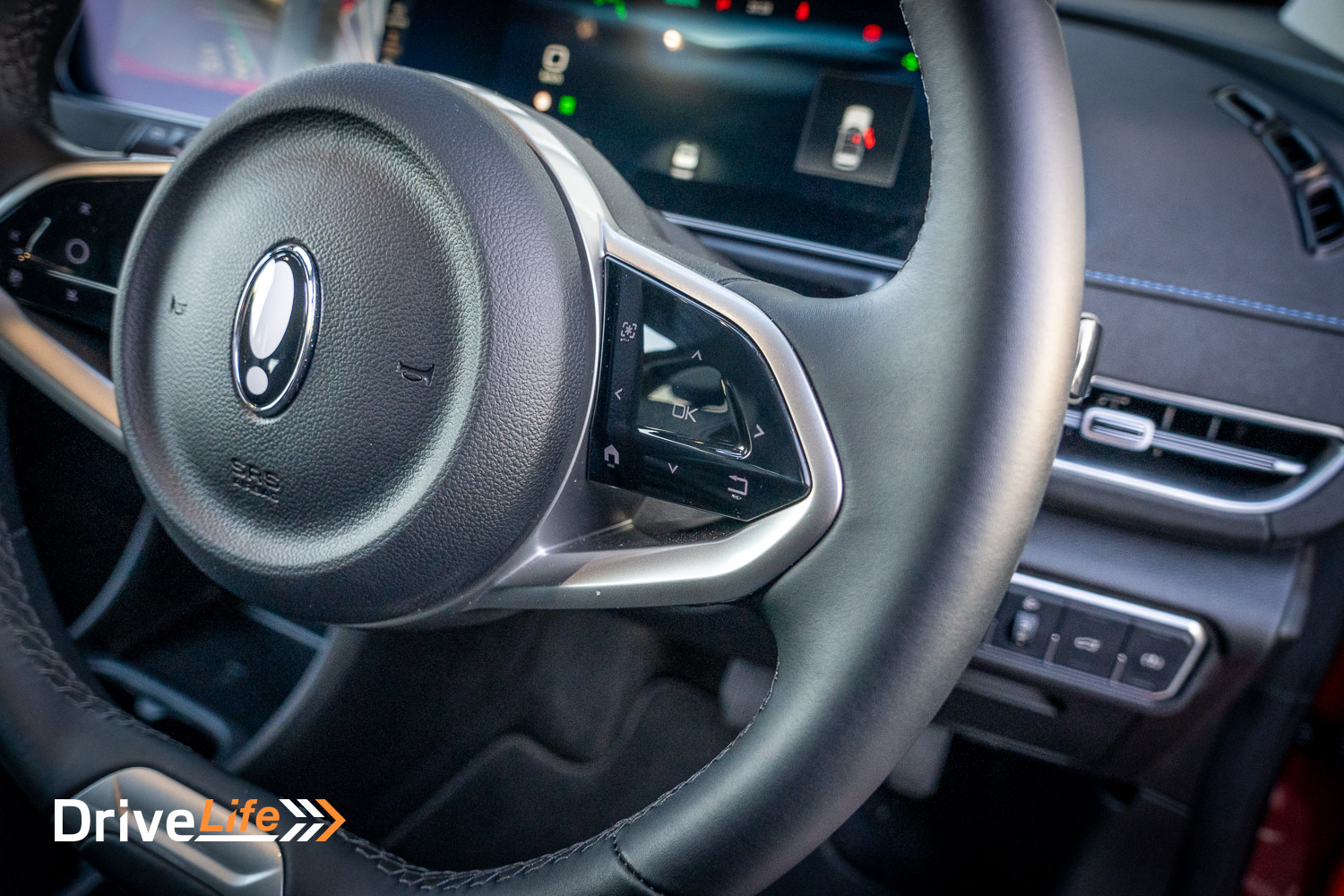
The dashboard is nicely clear and crisp, and the trip computer has some nice info included like tyre pressures and power flow. Without a cowl, it can suffer from sunlight making it very hard to read but on the whole, it’s good.
Adjusting the temperature or other AC settings on the Ora means using the screen, although there are physical buttons for front or rear demist, AC on/off and heating on/off. The dealership had set one of the two favourite buttons on the steering wheel to go straight to the AC screen, which was a good move. Still, to adjust the temperature means using the tiny slider on the right side of the screen, and it’s very hard to use on the move. You can use voice commands for this, and you should. It’s a bit painful.
The infotainment system itself is speedy and pretty intuitive. You’ll need to use the screens to find the small icon in one of the menus to bring up the 360-degree camera manually, or use the other steering wheel favourite button for this (I did). There is also a setting in the menus to enable auto blind spot monitoring, meaning when you get close to an object or put your indicator on, the cameras on that side of the car will pop up on the main screen.
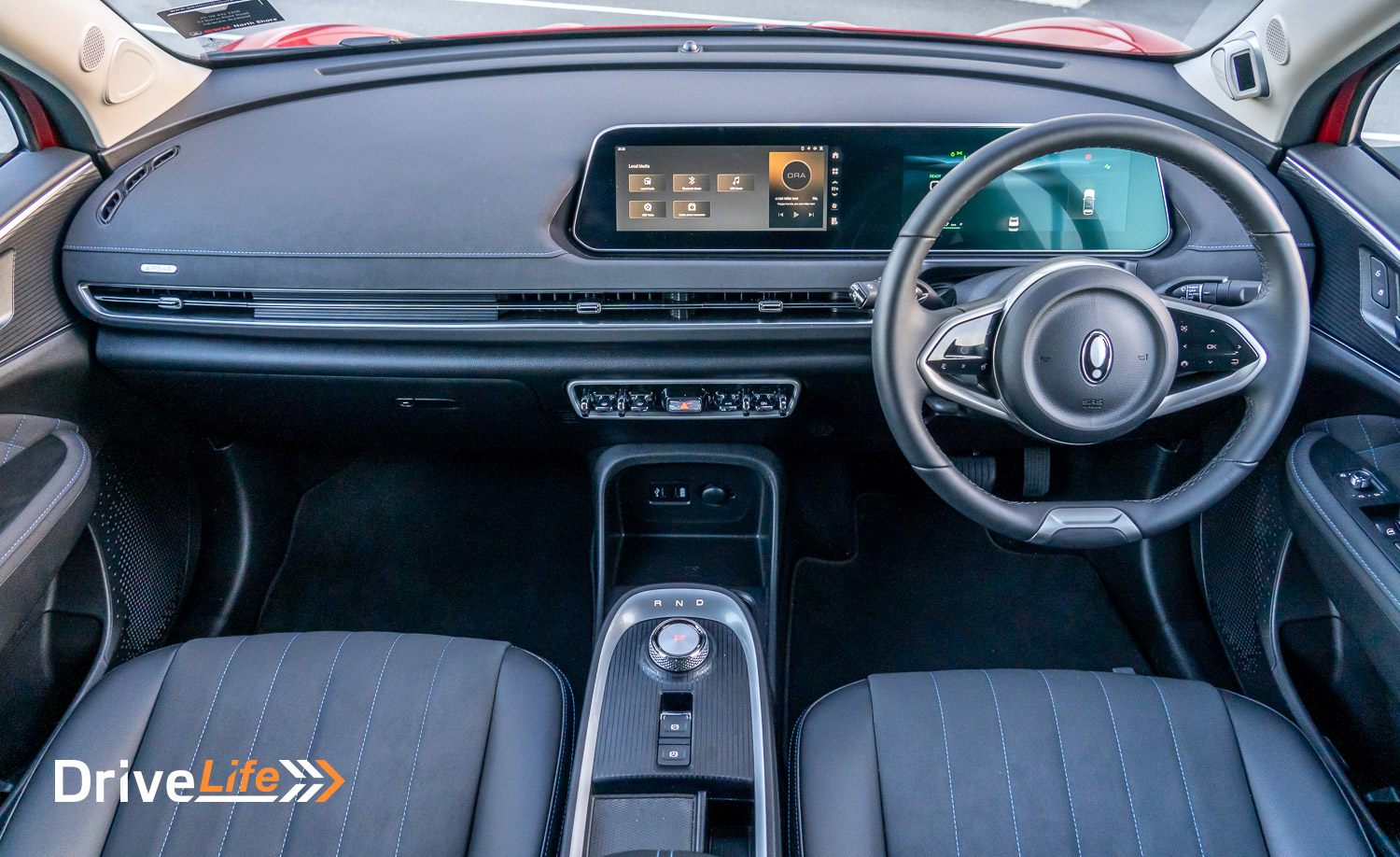
But what about actually driving the GWM Ora? It’s good is all I can say. The MG4 drives better, but the Ora would suit many buyers. The performance, as mentioned, is plenty for most people and even 5-up, the performance is still acceptable.
Like the BYD Dolphin I reviewed recently, the Lane Keep Assist (LKA) on the Ora was a bit too keen and seems to suffer from the same issue. That issue is when you have your indicator on; at this point, LKA should turn off – you are turning, after all. But if you move onto a flush median on a turning bay, the Ora will try and guide you back into your lane with vibrations through the steering wheel. It was much worse in the Dolphin, but I could still feel the wheel on the Ora trying to push me back into my lane. Hopefully, this gets resolved in an update at some point.
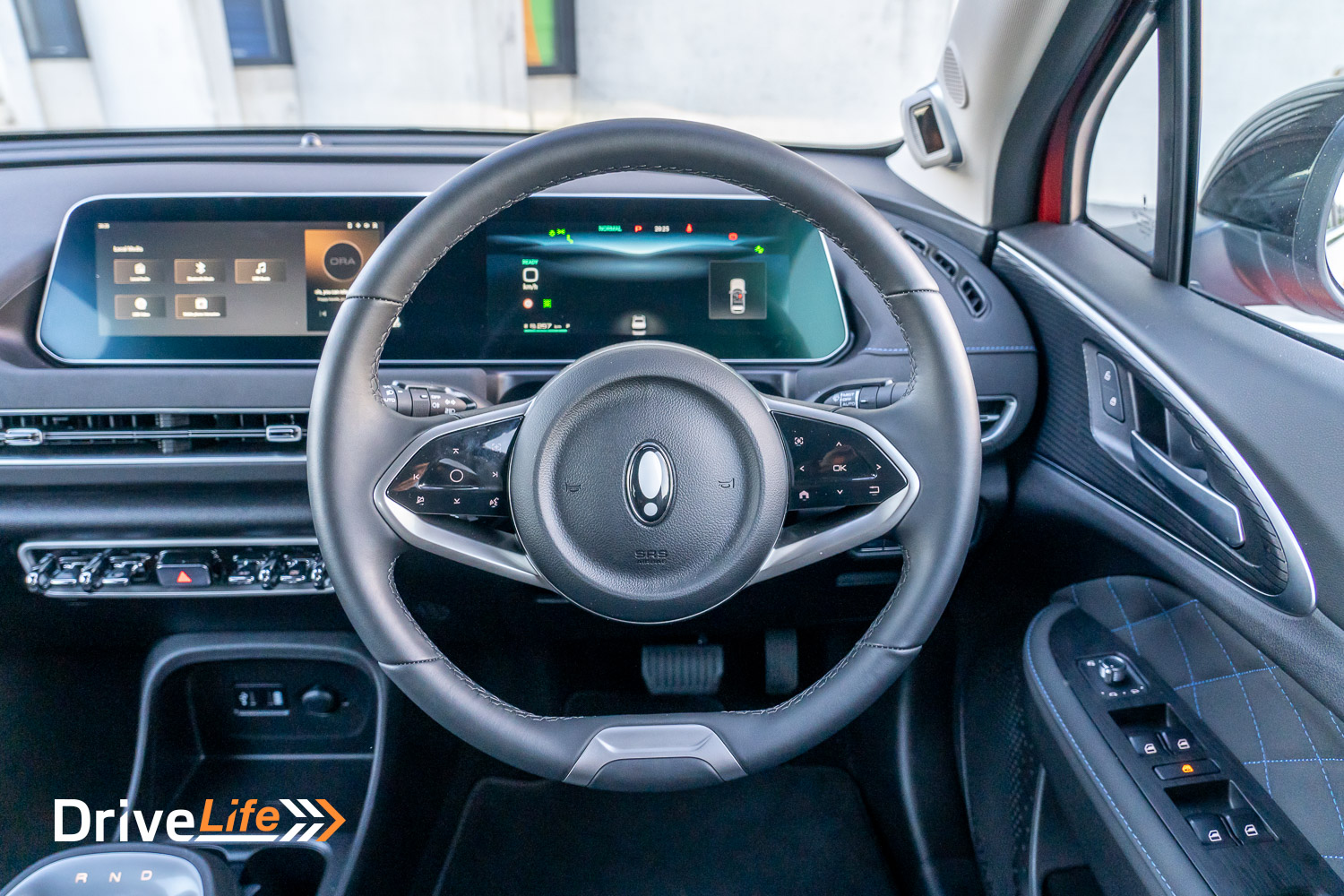
You get to pick from 4 drive modes in the Ora; Normal, Eco, Sport, and Auto. The car will always default to Normal on start-up. If you select another mode, you’ll get a little audio track to go with the change. Moving to Eco you will hear some bubbles (?), while moving to Sport will hear an engine revving up. Geeky and a bit over the top, but it could be worse.
The audio system in the car is ok, not great but not terrible either. Note there is no volume control other than those haptic steering wheel controls, or using a voice command. Weirdly, if you aren’t using Apple Carplay (there is no Android Auto functionality), you can’t browse audio tracks via Bluetooth – you’ll need to pull over to find another track, or change playlists. Not the end of the world though, and just another reason to use CarPlay or Auto.
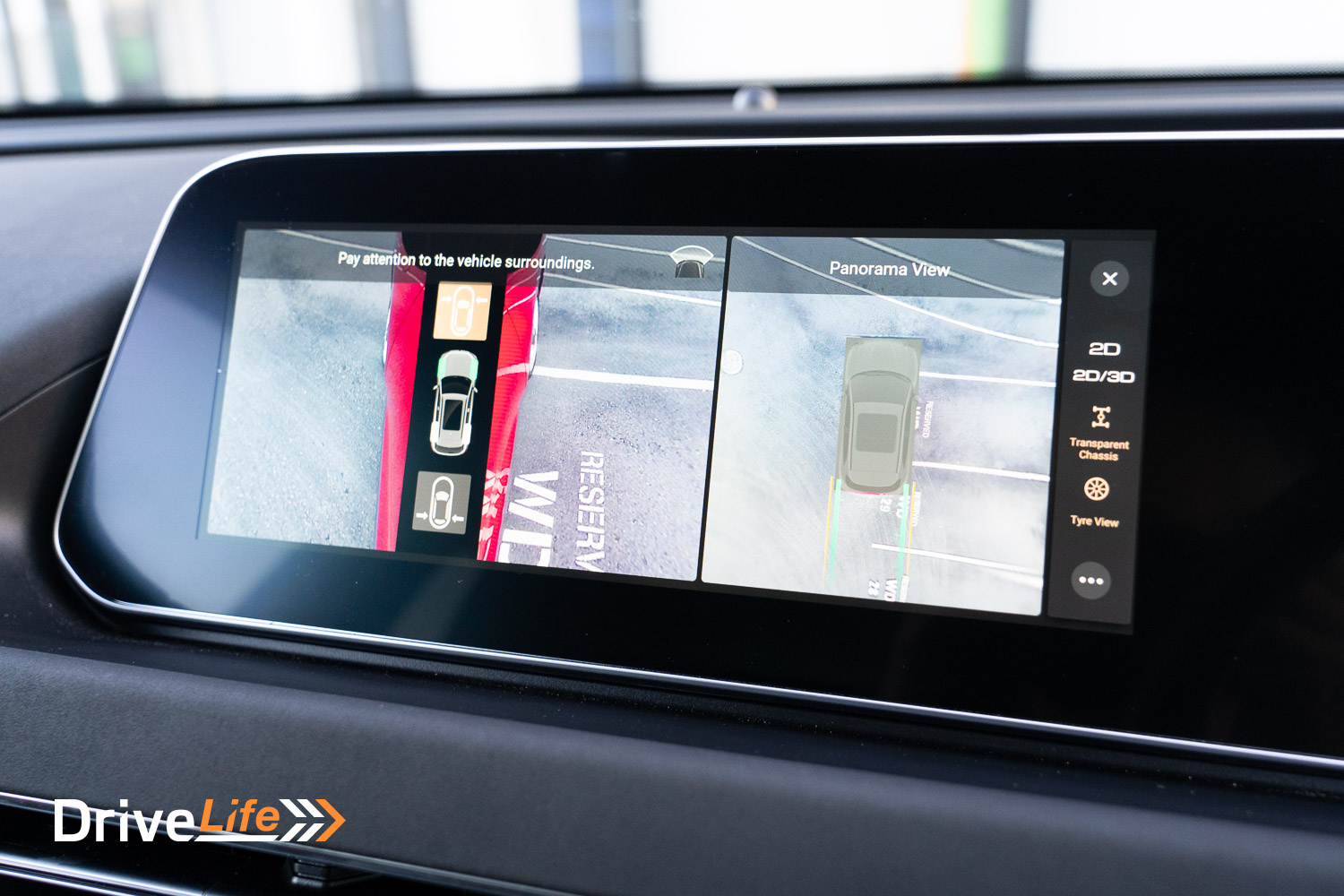
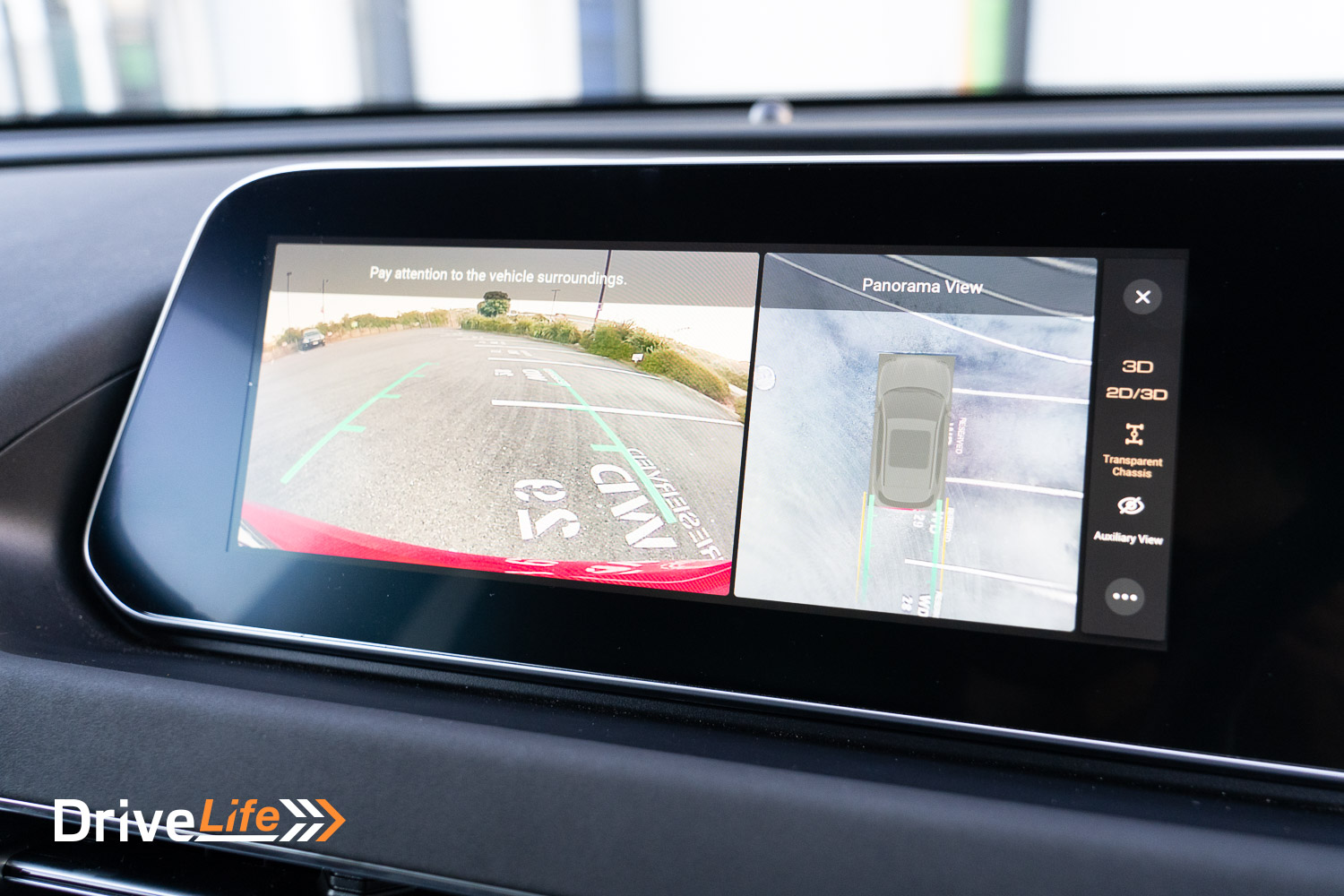
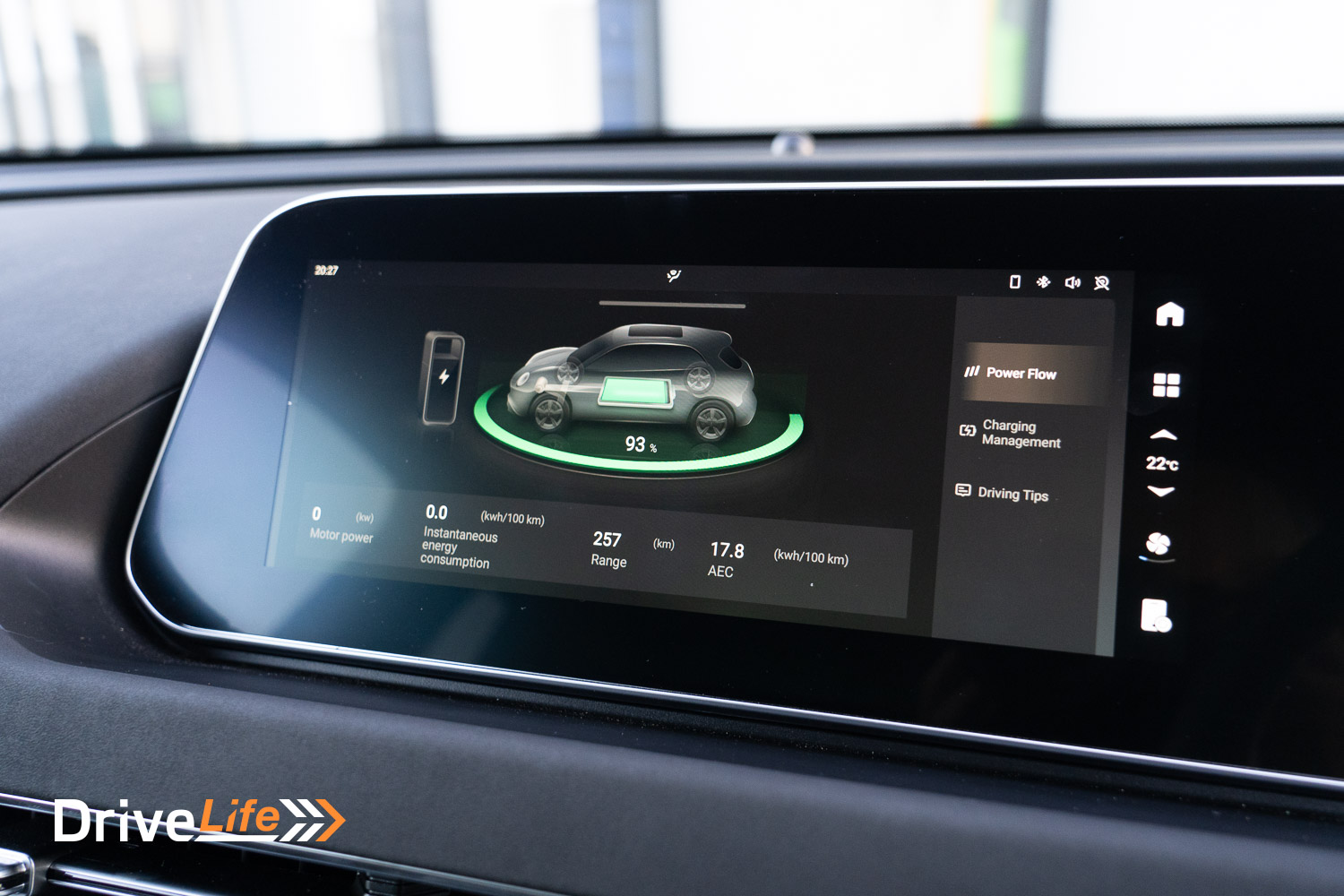
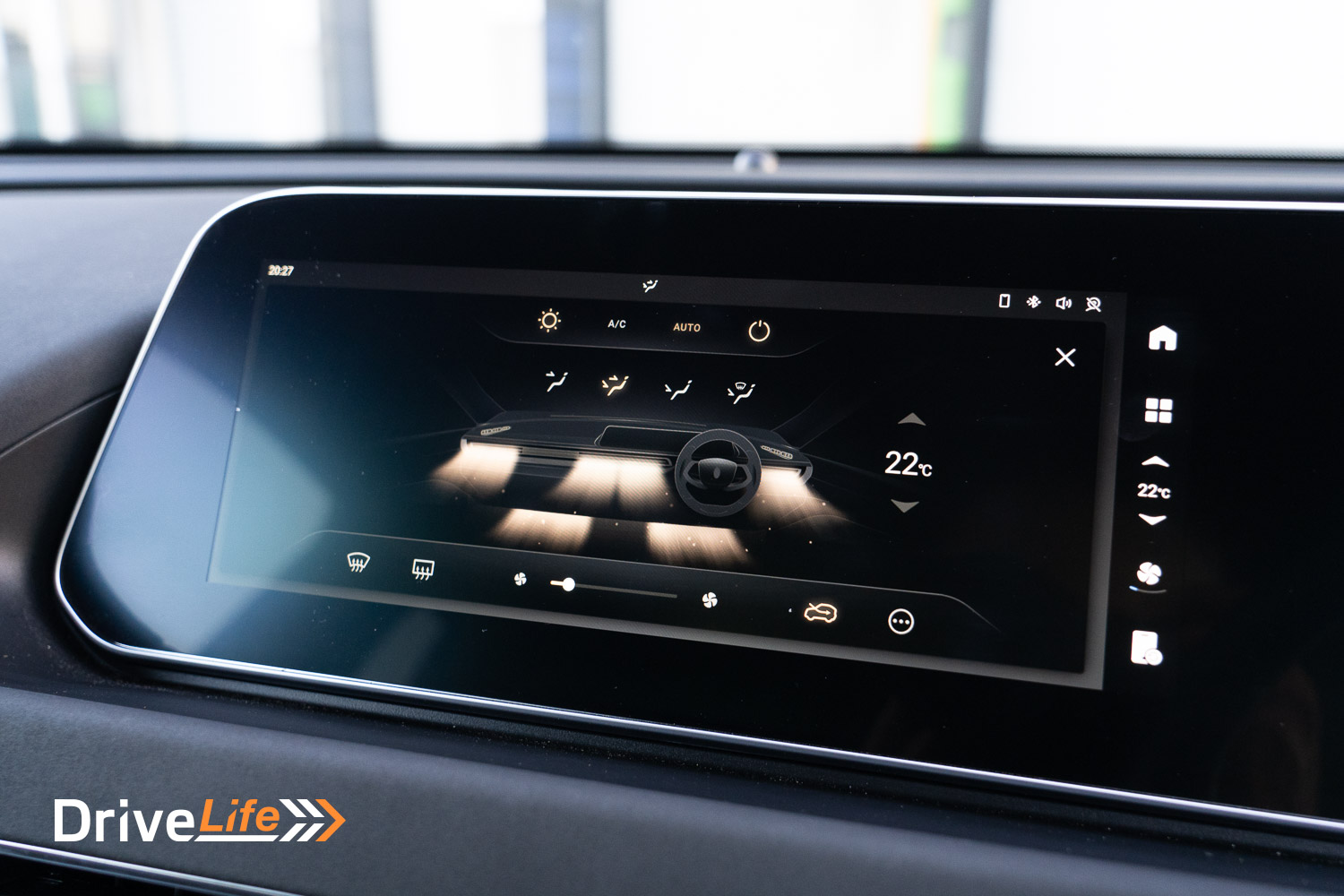
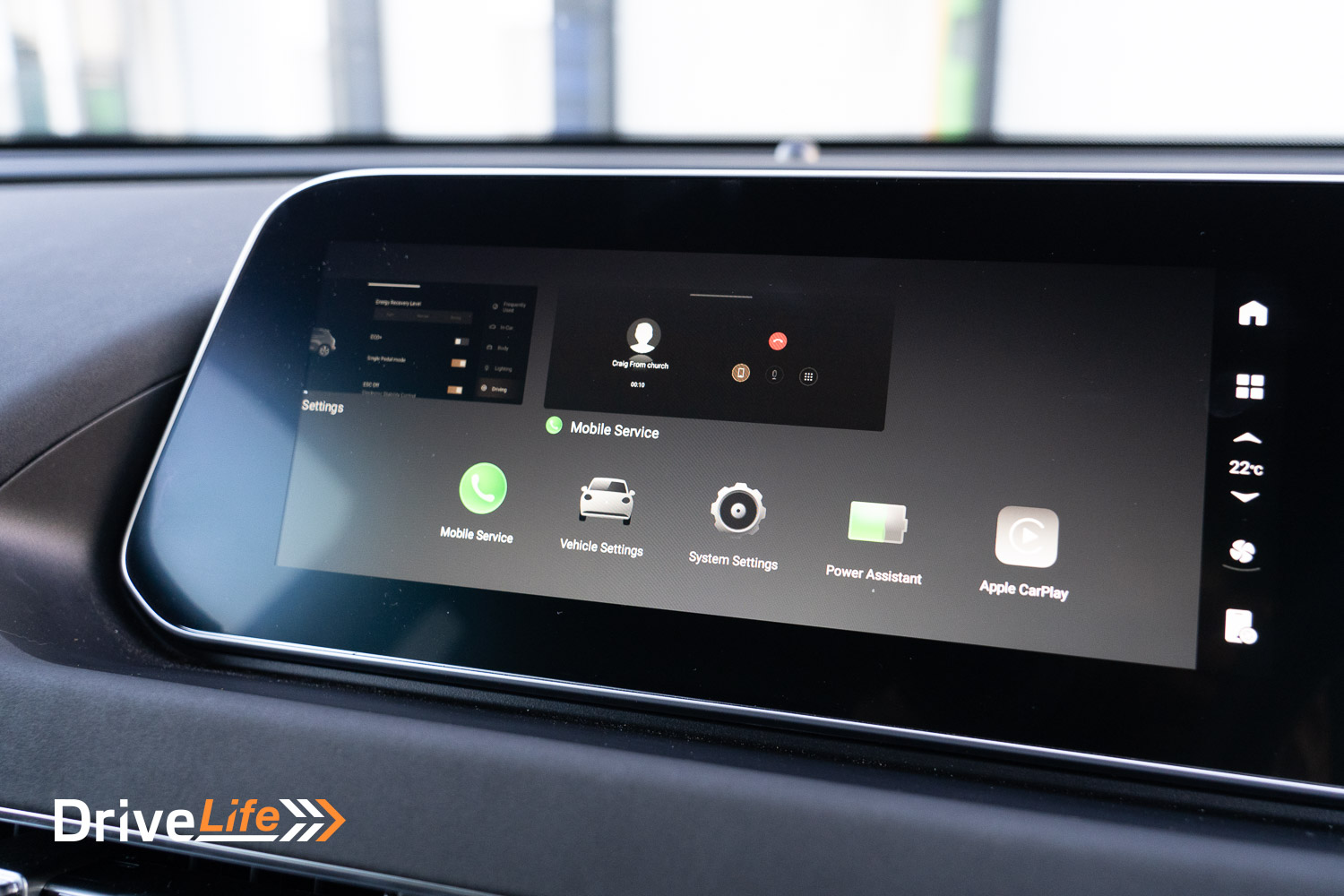
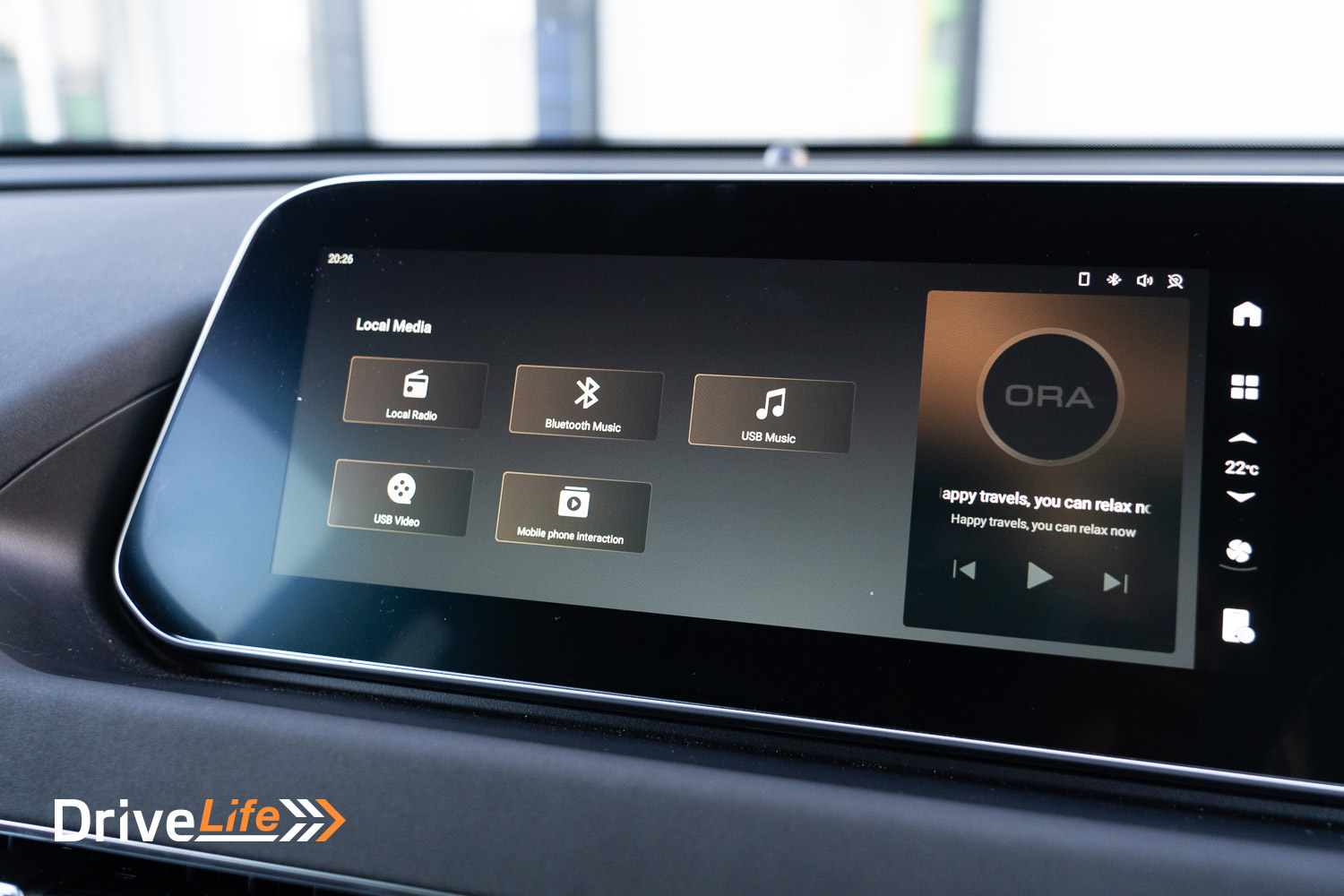
During my time with the Ora, I had to head over the Remutaka Hill to Featherson, and then Lake Ferry – a decent drive of around 300km. There’s no EV charging at Lake Ferry, so we’d likely do a quick top-up in Featherston.
On the way over the hill, I tested out the Ora’s “Intelligent Cornering”. This feature sees the car slow down for corners while using cruise control. But like other systems, it’s just too slow, even on the motorway on corners that you could take at 140km/h, the car would slow down to 90km/h. It’s not smooth either, so I left it turned off.
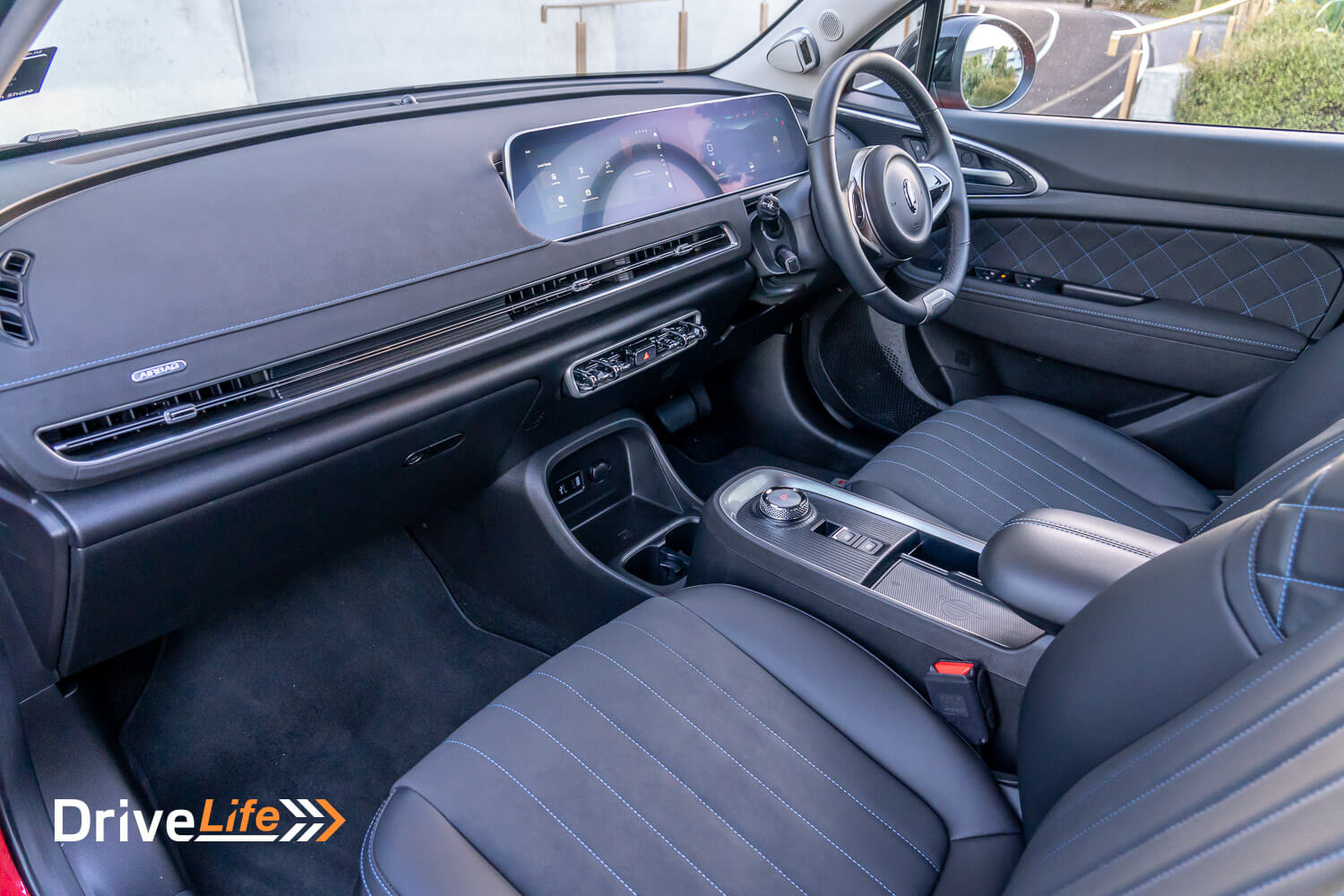
There was a glitch for the whole time I had the Ora. On the dashboard, I would get a message, “Lateral Control exited, please take control of the wheel”. You would expect this when using cruise control and steering assist if the car couldn’t read the road, but I got this message every time I drove the car, along with a little ‘bing’ tone. Not too annoying, but also a little annoying.
Another occasional glitch was with the centre display; sometimes on getting into the car, it wouldn’t turn on for a minute or two. Putting the car into reverse would get the 360-degree camera up but then moving into Drive would see no display. This happened half a dozen times during my time with the Ora.
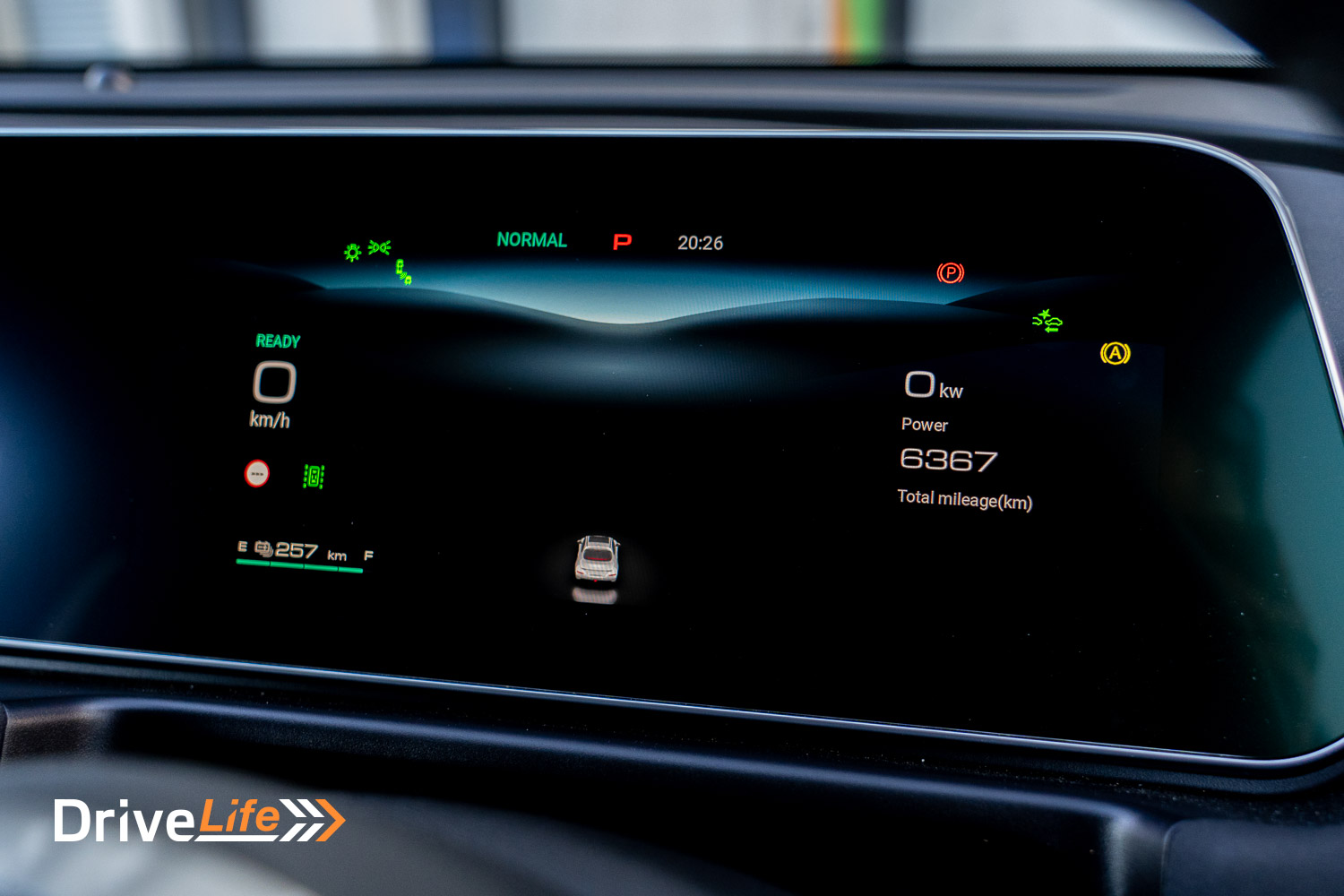
Driving over the Remutaka Hill, the car did well. Again, not fantastic but not terrible. It’s safe and predictable, and like other EVs, having 100% of torque instantly available out of a corner can only help.
A lot of people who might buy the Ora would wonder about the real-world range. The official WLTP rating for the base model Ora we are testing is 310km. With half my time with the car spent in the rain (this decreases your EV range) and Wellington’s hilly suburbs, I managed to get 240km out of the Ora. This is a fair way off 310km, but in a place like Christchurch where it’s mostly flat or with less rain, you’d likely get a lot closer to the WLTP figure.
I couldn’t reset the energy economy computer for the car, so I had to go off what it was reading when I handed the car back, which was 17.1kWh/100km over 750km of commuter driving and that trip across to the Wairarapa. That’s a reasonable amount higher than the 15.3kWh/100km/h we got from the BYD Dolphin, but comparable to its rated figure of 16.7kWh/100km.
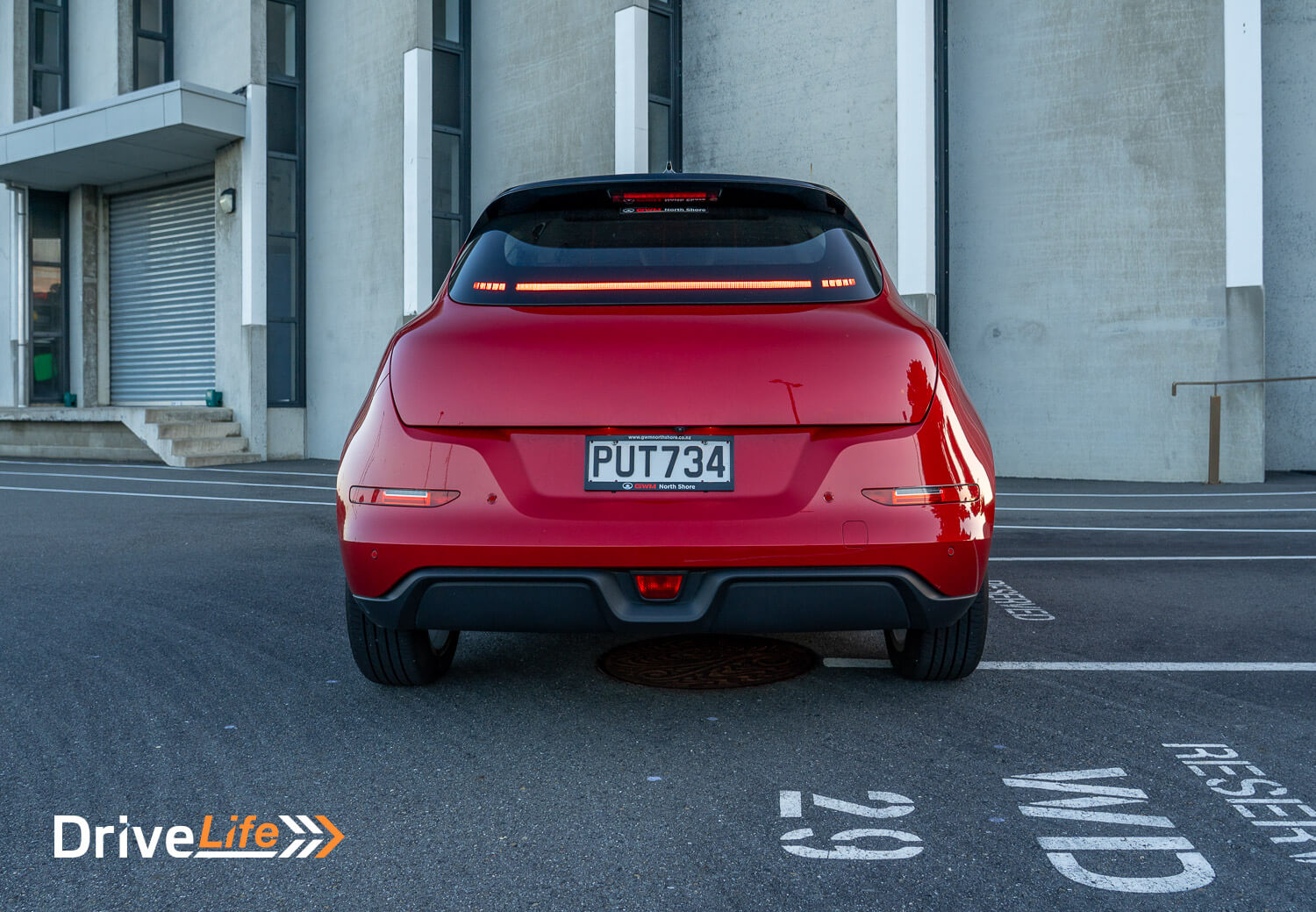
2023 GWM Ora Standard Range – Specifications
| Vehicle Type | 5-door, small hatchback EV |
| Starting Price | $42,990 |
| Price as Tested | $43,495 |
| Engine | Electric |
| Power, Torque kW/Nm | 126/250 |
| Transmission | – |
| Spare Wheel | Tyre repair kit only |
| Kerb Weight, Kg | 1,540 |
| Length x Width x Height mm | 4235x1825x1603 |
| Boot Space / Cargo Capacity, Litres (seats up/seats down) | 228/858 |
| Energy Economy, kWh/100km | Advertised Spec – Combined – 16.7 Real-World Test – Combined – 17.1 Low Usage: 6-10 / Medium Usage 11-19 / High Usage 19+ |
| Towing Capacity Kg, unbraked/braked | Not rated |
| Turning circle metres | 11.2 Small: 6-10m / Medium 10-12m / Large 12m+ |
| Warranty | 8-year battery warranty 5 years, 150,000km vehicle warranty 5 years Roadside Assist |
| Safety information | ANCAP Rating – 5 stars – Link Rightcar.govt.nz – 5 Stars – PUT734 |
Have you enjoyed this review? Be sure to join our monthly email newsletter list so you don’t miss a single car review!


